March 29, 2020
Martha O'Kennon
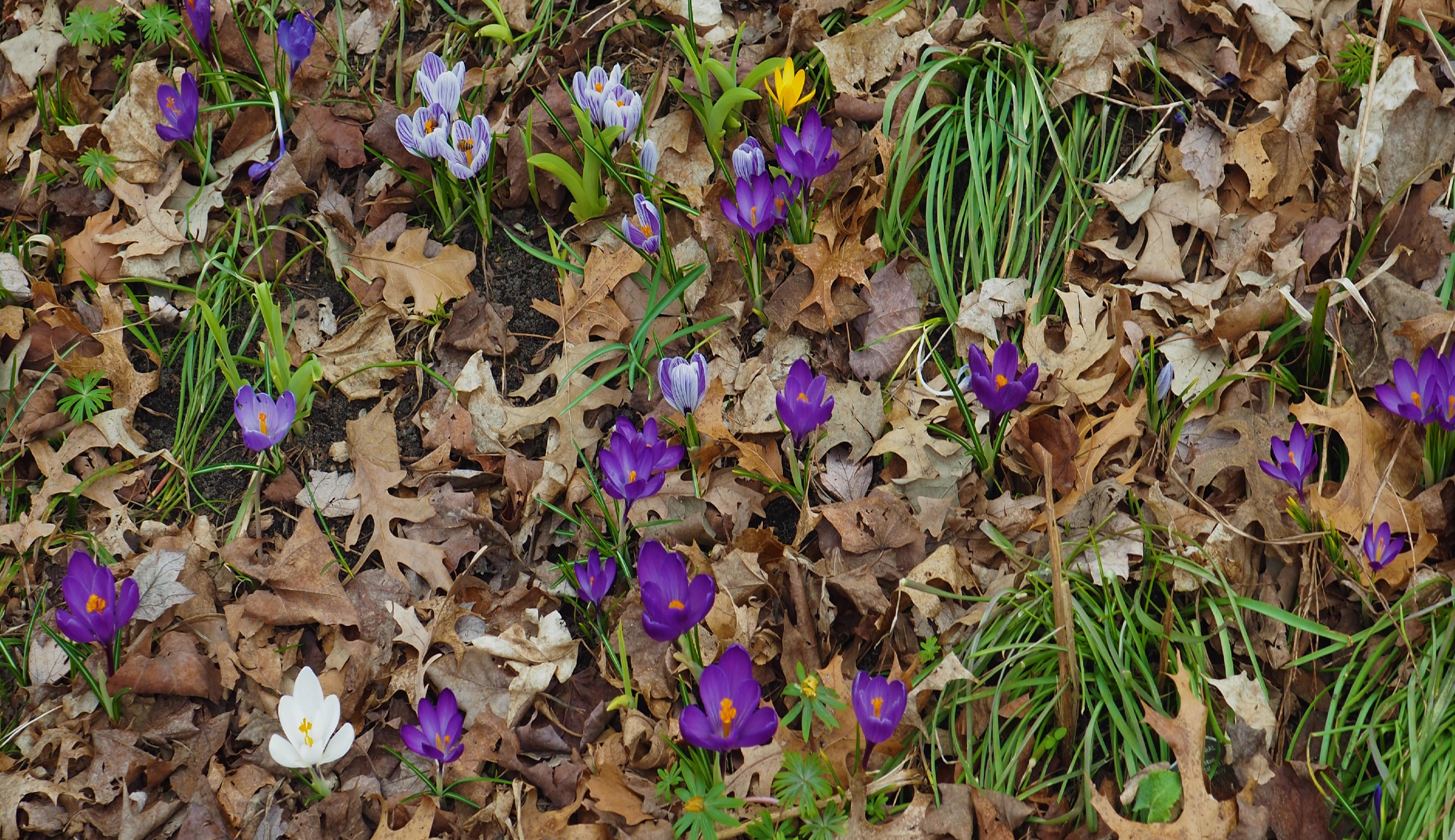
Here is a peek at the crocus in bloom by the front sidewalk. If you click on the picture a couple of times,you can enlarge it and navigate to the two striped crocuses, each one with its own visitor.
Remember that there is information in the name of the file for each image. You can see it by mousing over the image - look at the lower left of the screen. Or you can click on the image to get to the (usually) larger image. Then the info is displayed in the address line above. Sometimes the second click will actually display a different view of the original image.
The Winter Aconites are finished in the back yard. That's why we have a front and a back yard. Spring comes sooner in the back, must be. Here's one of my favorites among the larger crocus varieties - purple with white stripes or was it white with purple stripes? Whichever it is, it has two Honey Bees in it. The third crocus has two other visitors - a Western Honey Bee (that's the species we get around here) and a greenish-blue Blow Fly (I think - I still don't know a Blow Fly from a Bot Fly)!
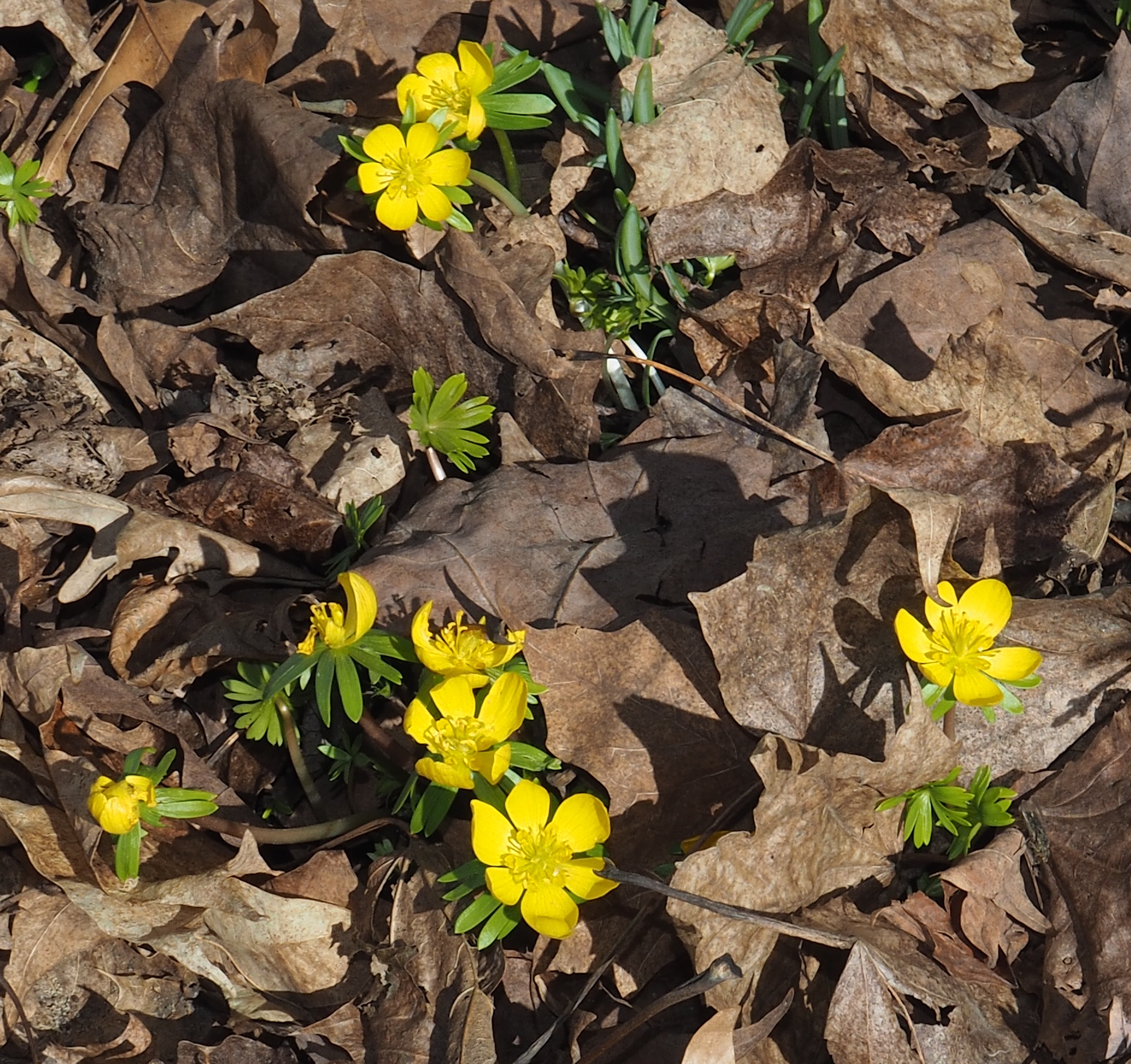
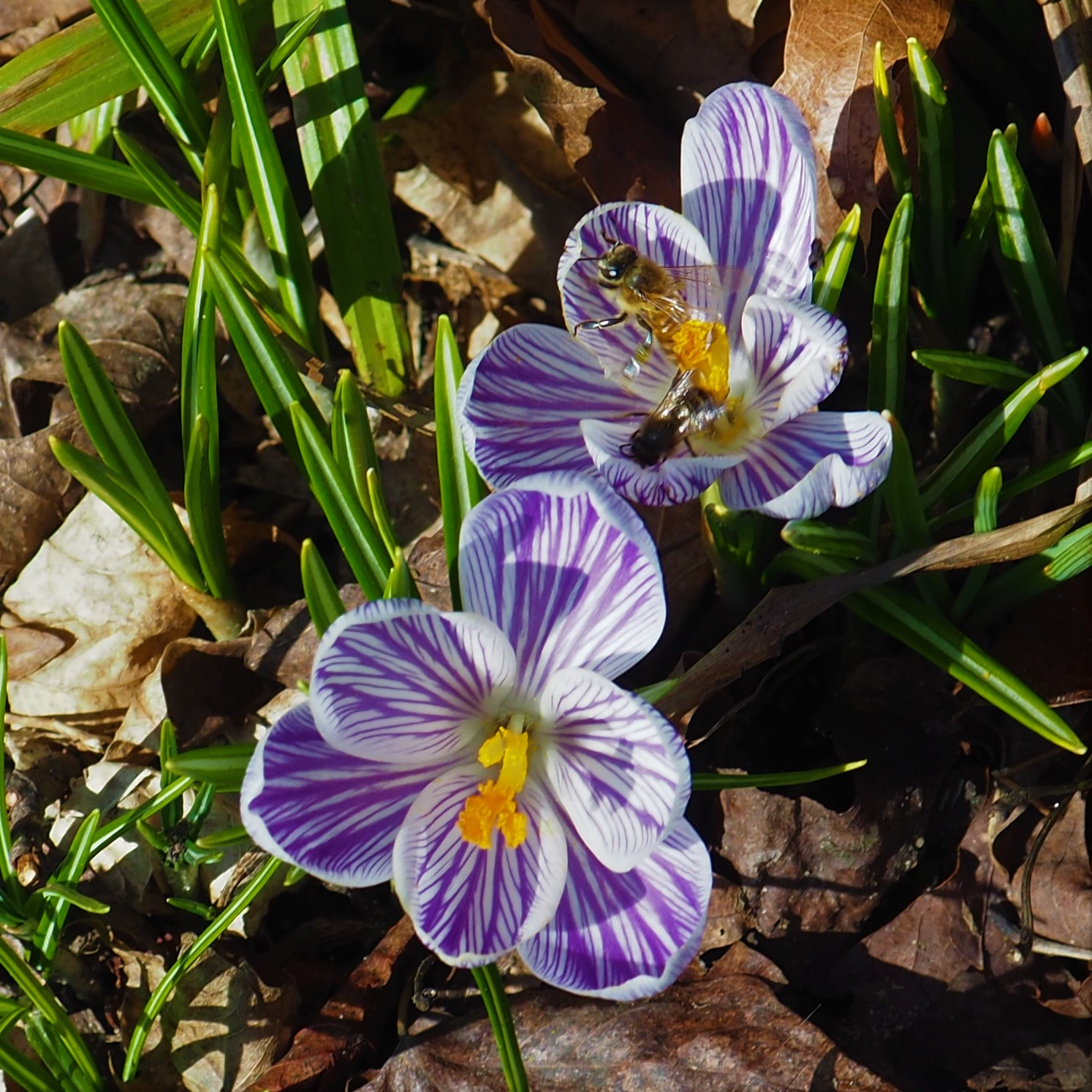
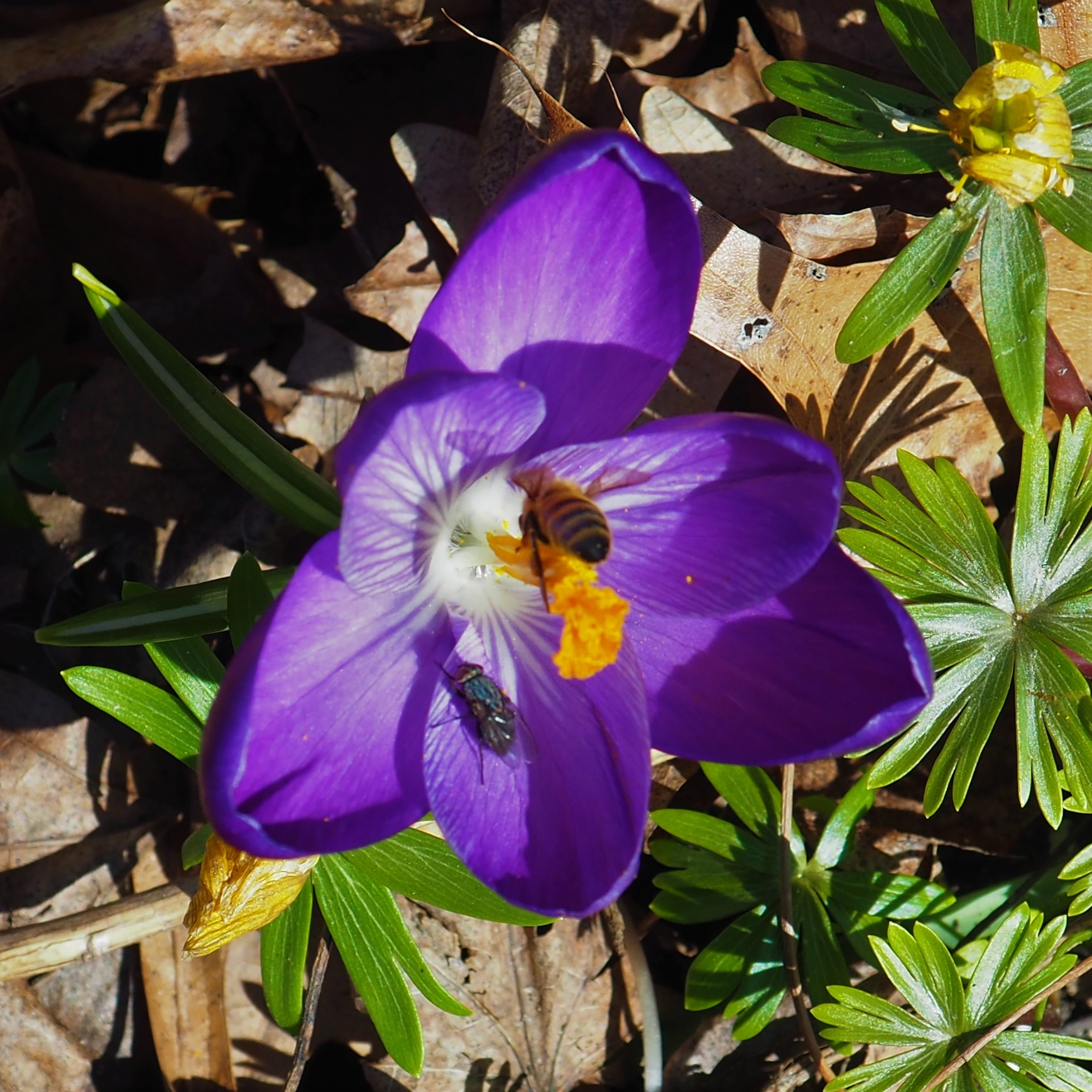
Surprise! All winter the ants were somewhat standoffish but when one did appear, it was always a Small Honey Ant, as in the first image. But look at the second ant - it is one of the Carpenter or Sugar Ant genus. It has a nice red tint to its large combined segment. First non-Small-Honey Ant I've seen for months! It's as if Nature doesn't know that our species is in trouble and plans to just keep to its schedule.

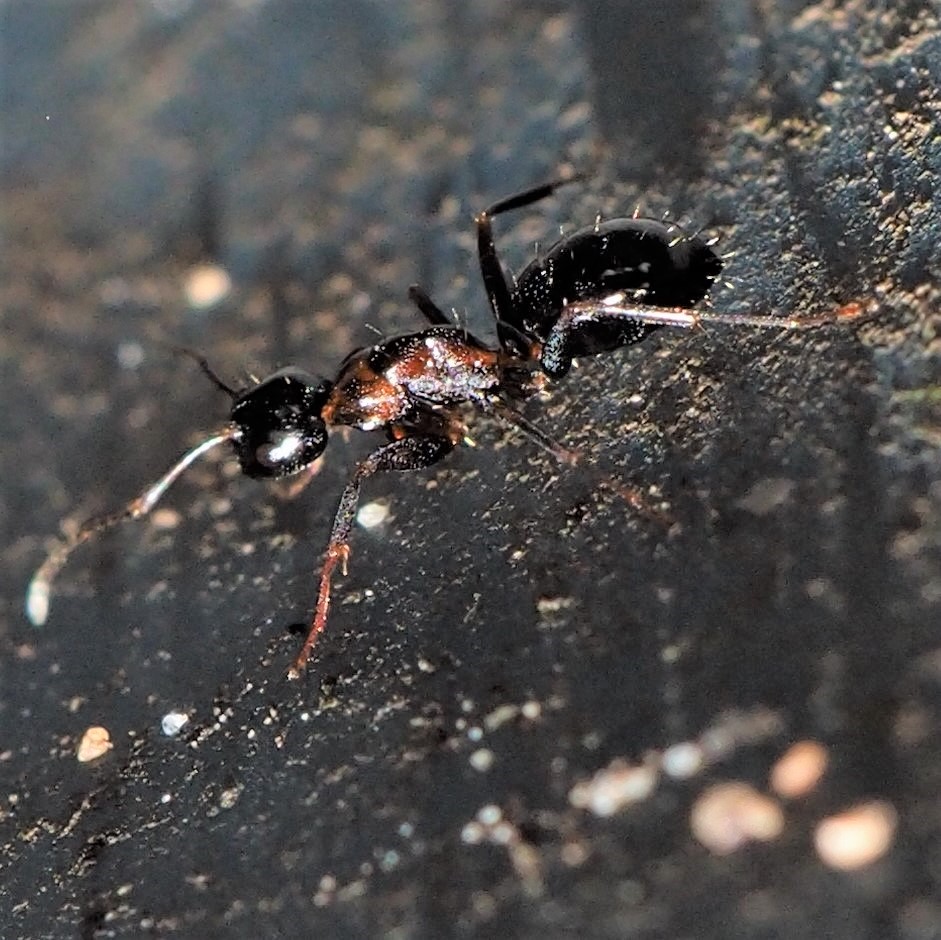
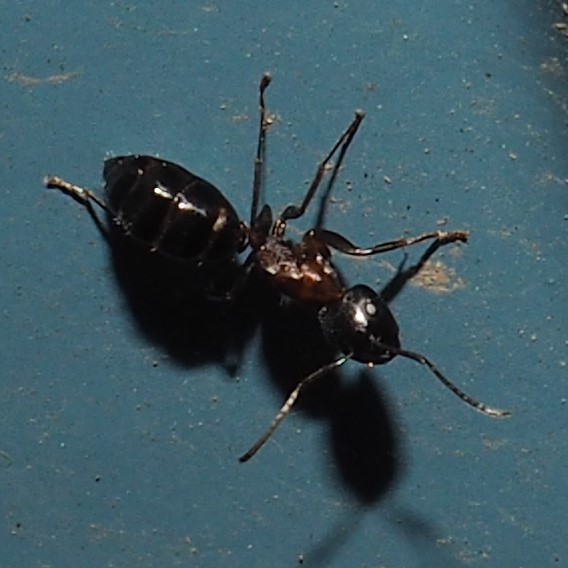
Let's see. We've seen Bees.. We've also seen a few kinds of Beetles. Here's a brownish one that doesn't look too different from the number of reddish ones we've been seeing. Here is another of those Rove Beetles we saw earlier. Third is one of those Carpet Beetles and it was on the wall behind my bed!
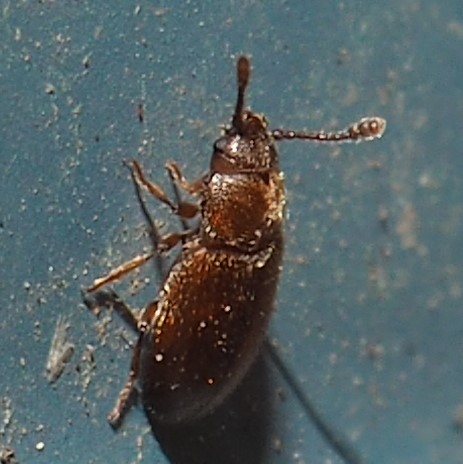
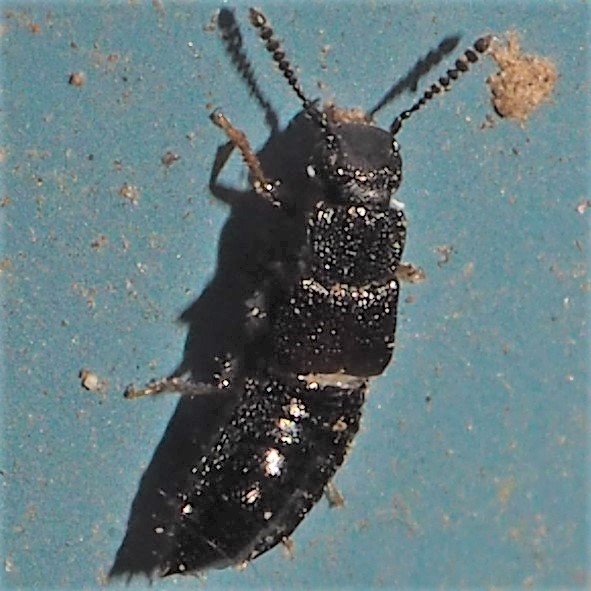
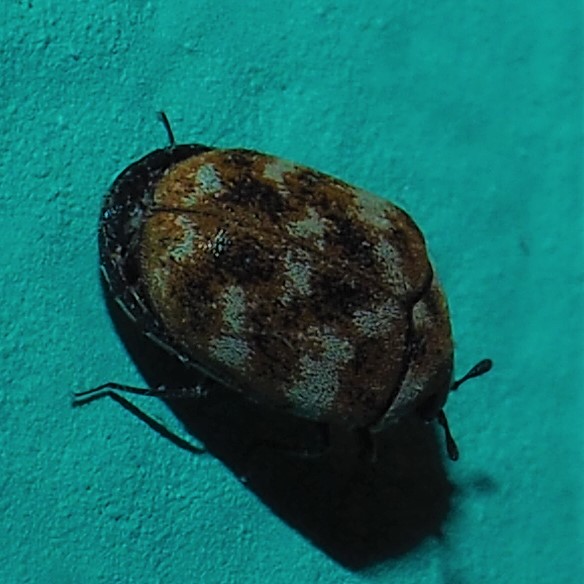
Well, not all of those Beetles, with their nice tough outer shells, are impervious to some of the predators. Here is one being wrapped by a spider. The spider may have been a Common House Spider, but it was weaving so quickly I couldn't get a good shot of it. Oh wait! Picture 3 was taken a day later - a different beetle but maybe the same kind and a different spider, this time a CHS, and we can almost make out what the beetle is!



I thought that was it for the Beetles, but yesterday I did one more tour of the Wall of Fame and found this minuscule weevil.
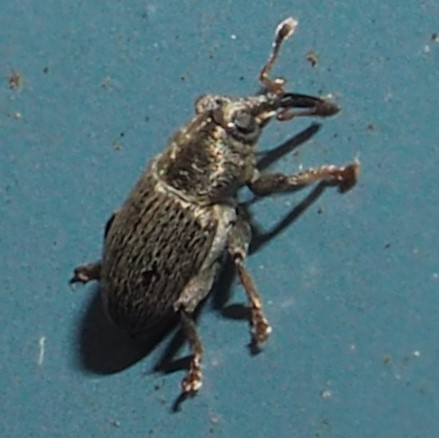
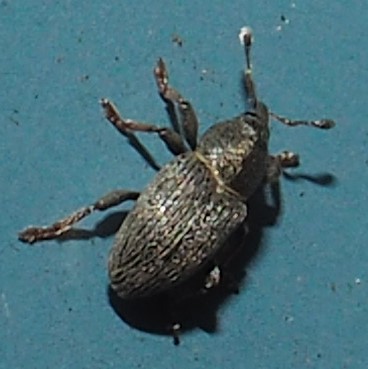
We finally saw a different caterpillar this week. You know how I've always had at least one kind of inchworm (or geometrid caterpillar). Well, this first one is NOT an inchworm. It's a Cutworm - how exotic! But the next two are - in fact they are two different kinds.
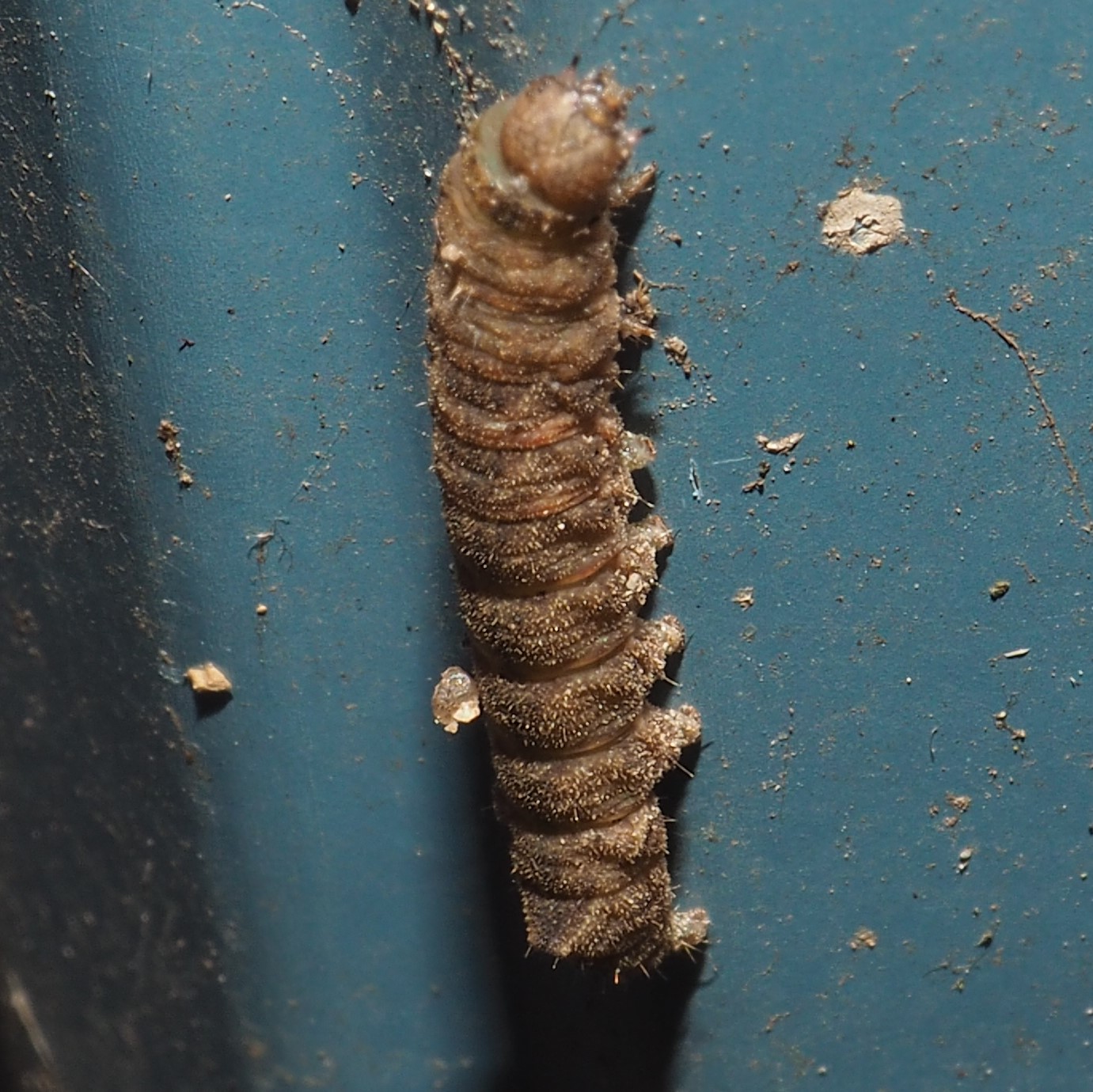
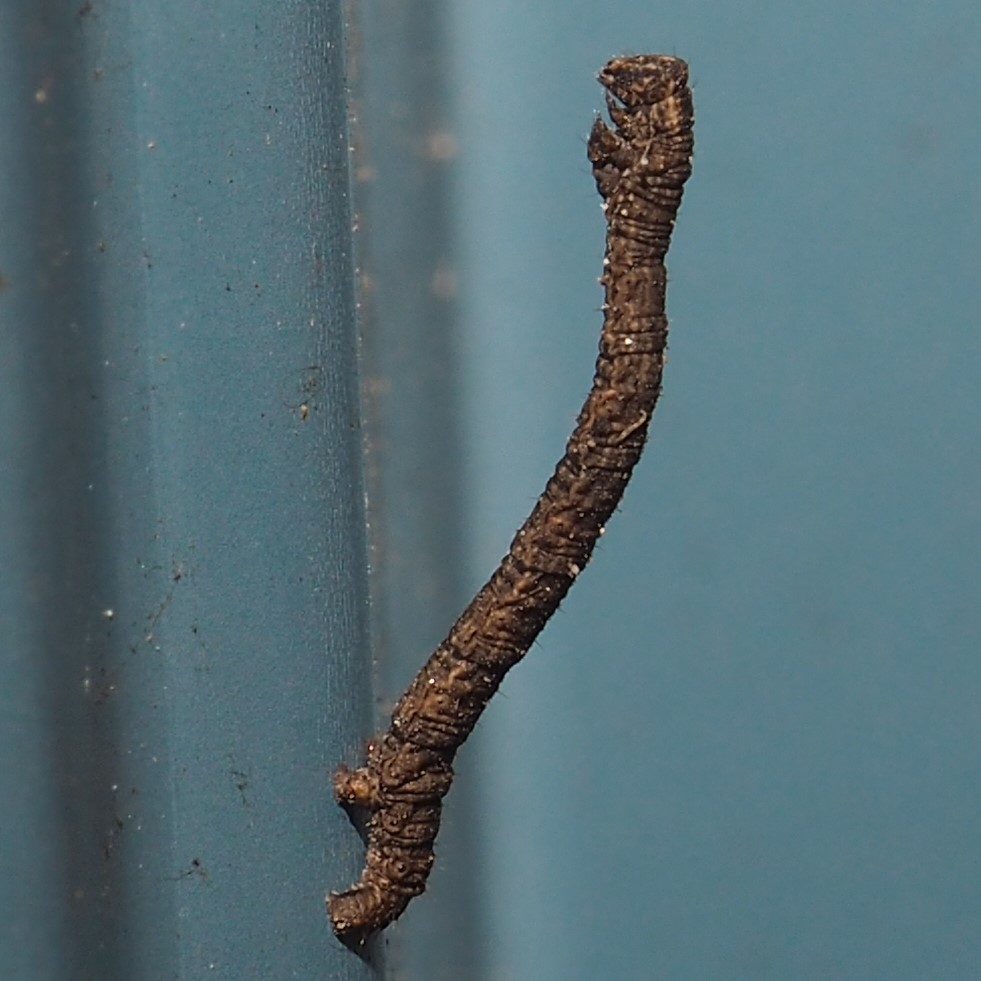

I know how you love crazy critters. Watch this Inchworm looping along with a few extra twists.

Last time we had several kinds of Leafhoppers. We didn't have ANY this time, and we didn't have any Barklice either. But we did have one Psyllid, a plant-parasitic creature - this one is actually in genus Pachypsylla (Thick Psyllids). See how much stouter its body seems than things like Leafhoppers. But fret not, we had plenty of Flies! We certainly had our share of Midges and Fungus Gnats, and maybe a Gall Midge. First here is a Midge (non-biting of course). I really love that iridescence when the sun hits its wings just right. Third is another Midge, this one with that red parasitic mite that particularly loves Midges. They always seem to show up on the side of what would be your neck if you were a midge.
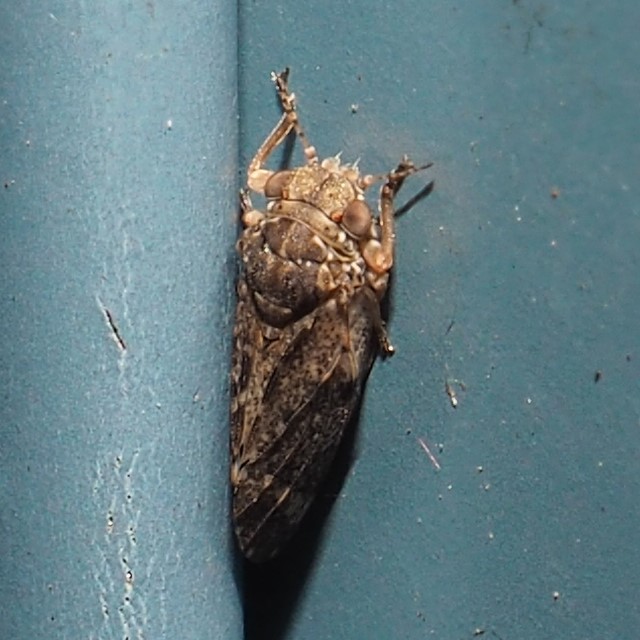
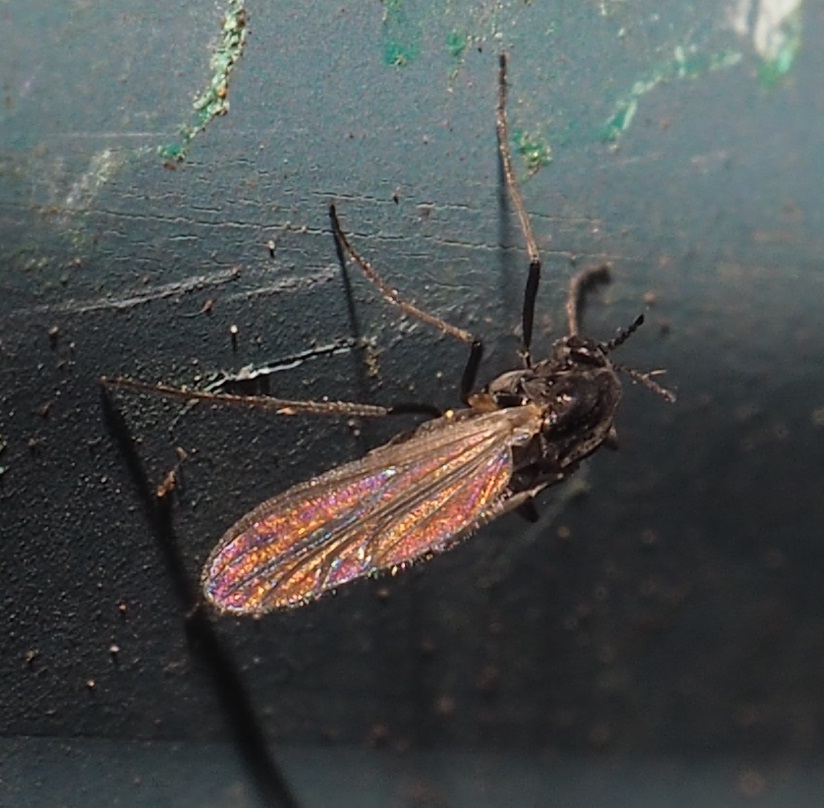
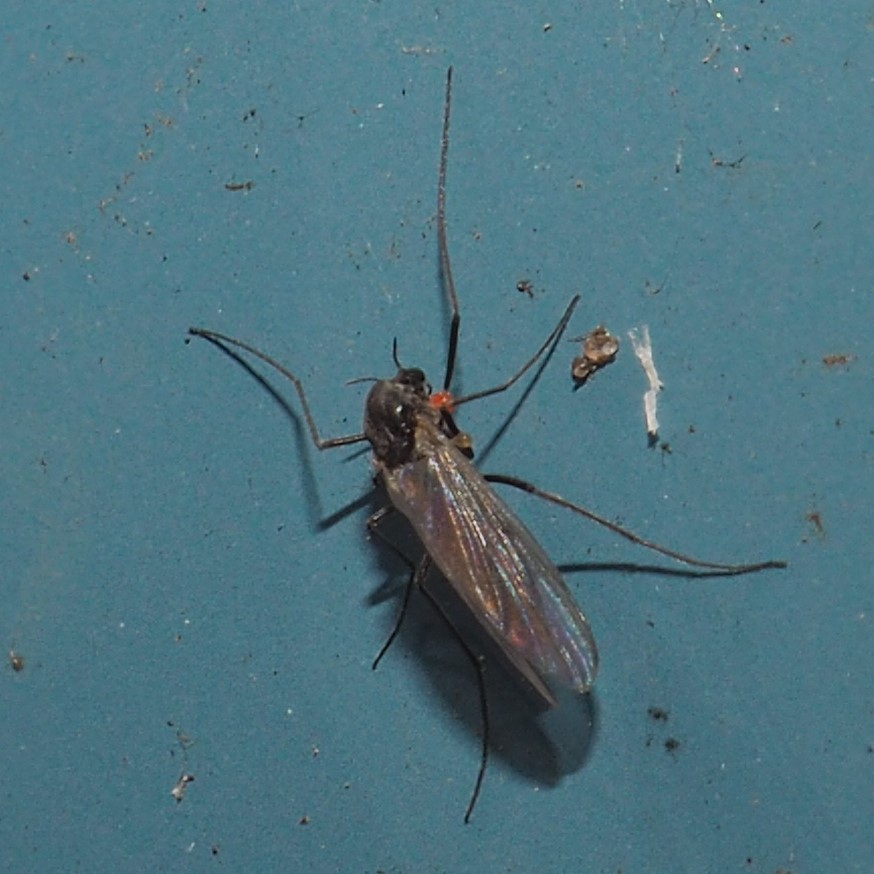
Next is a Fungus Gnat - I call anything that has spiky knees that. Next is what I think is a Gall Midge. They're named that because a gall forms around a fly egg its mother has lovingly laid into a leaf or stem. I diagnose them because of the amazingly complex antennae. Flies are such varied creatures. Some very colorful and quaint, some just look like, uh, Flies until you know them better. I admit I am in the stage of appreciating them more and more, sort of like with the spiders, but I just don't know enough to know who is who. Here is (third) a friendly-looking one.
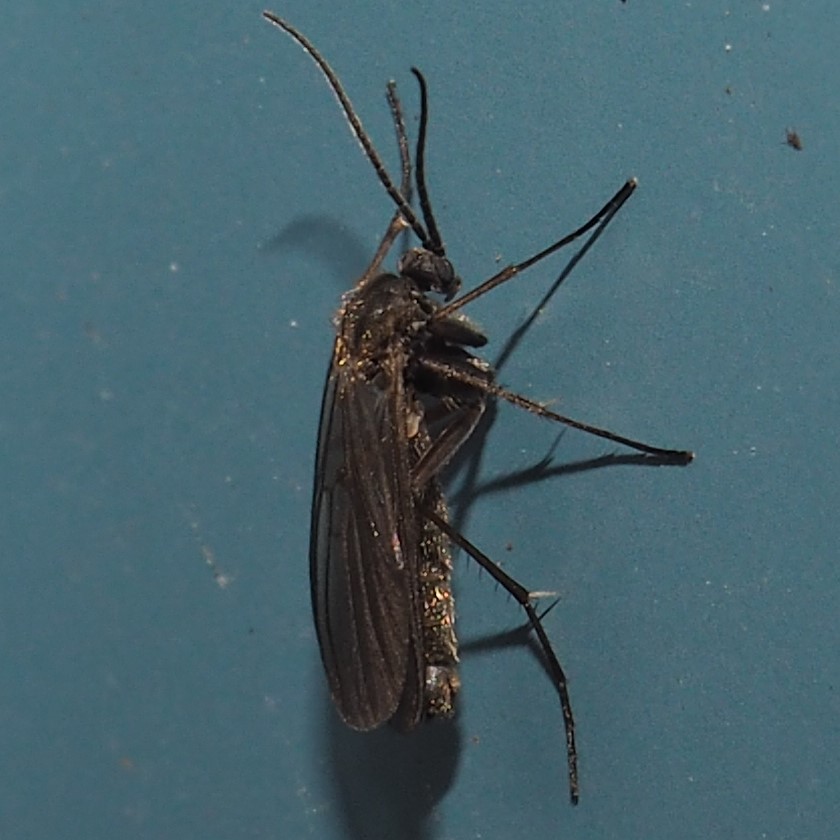
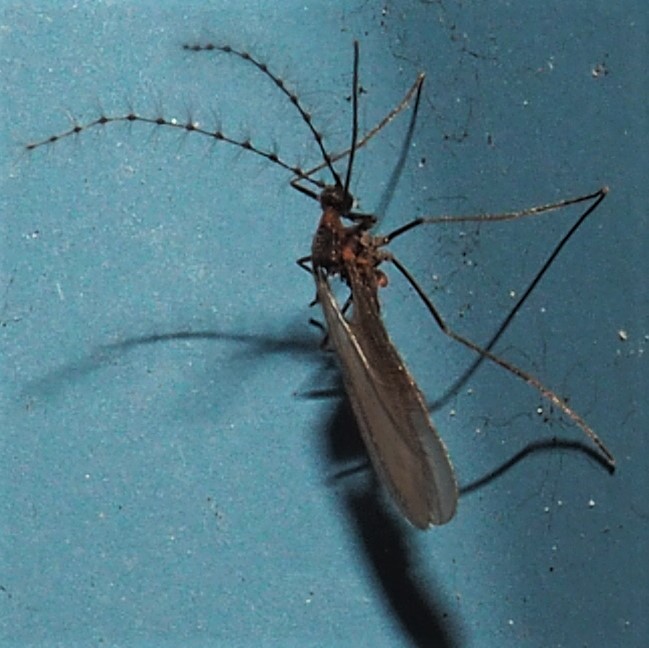
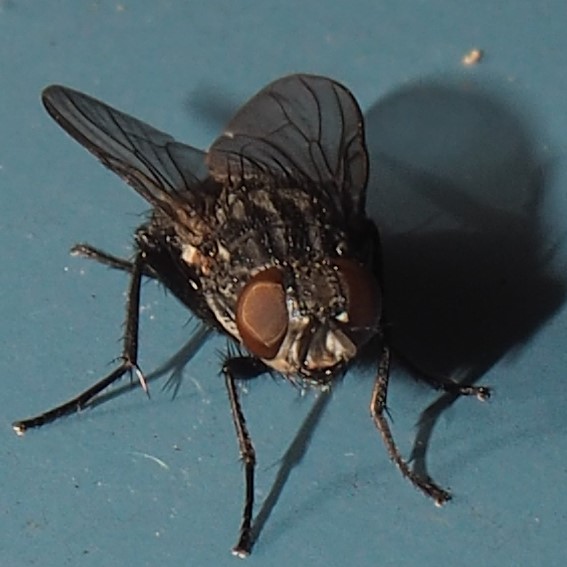
More flies. No clue who the first one is. But maybe the second is the fly that liked this crocus.
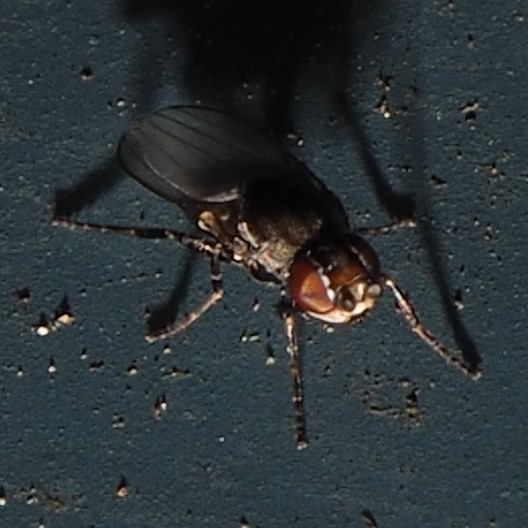

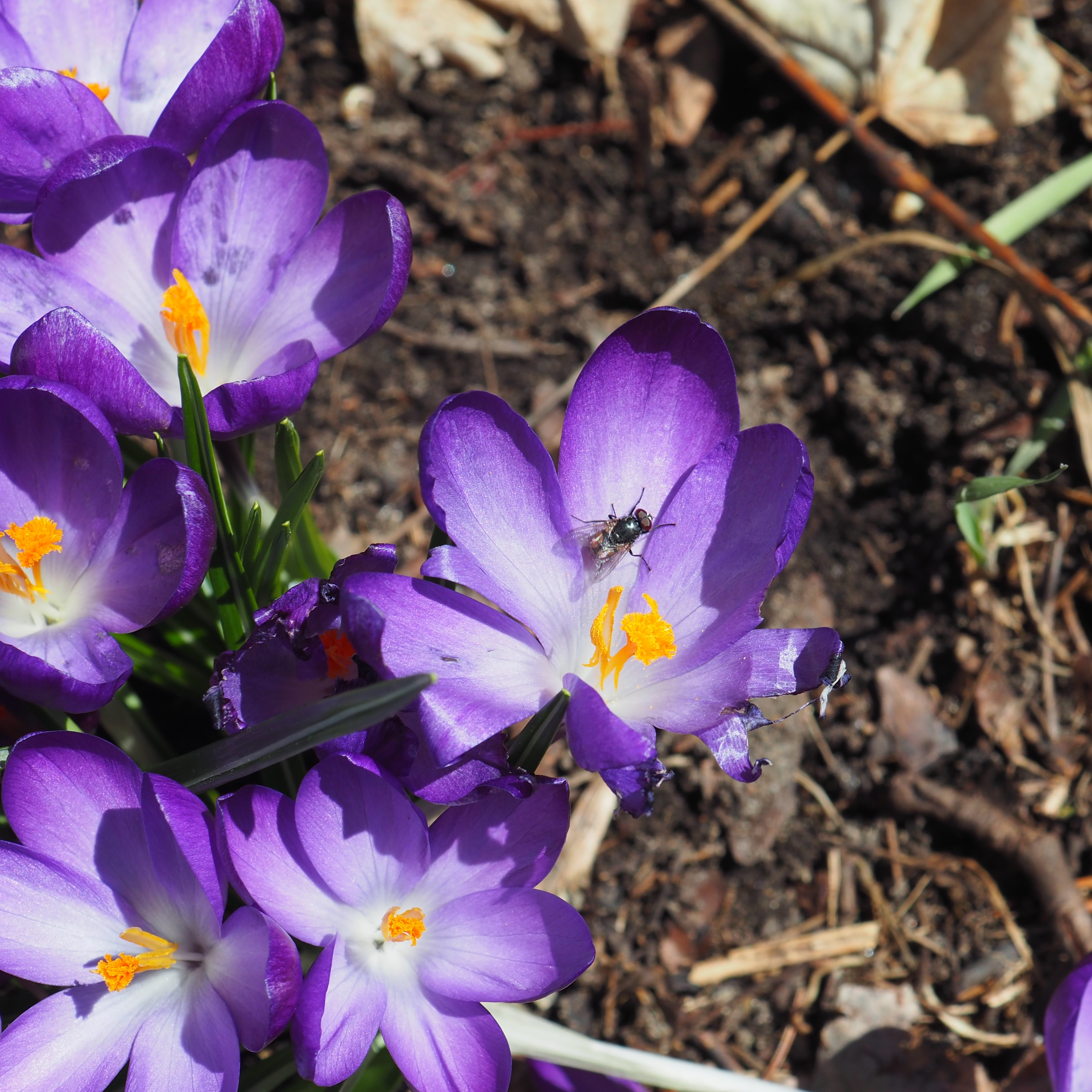
Here's one of those 4 or 5-spotted Dung Flies. Second is either a fly or a wasp that looks like a fly - but going from what seems like only one pair of wings, I'm going with Fly for now. Third is a very hairy fellow.
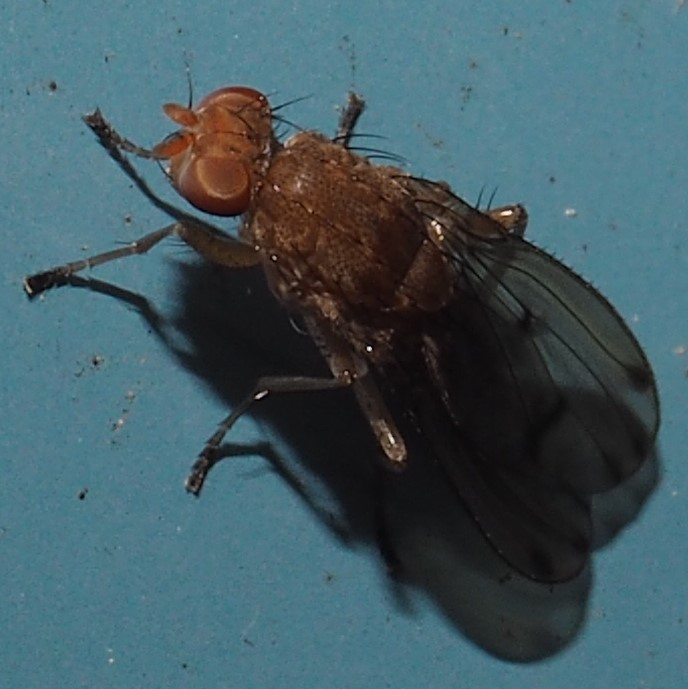

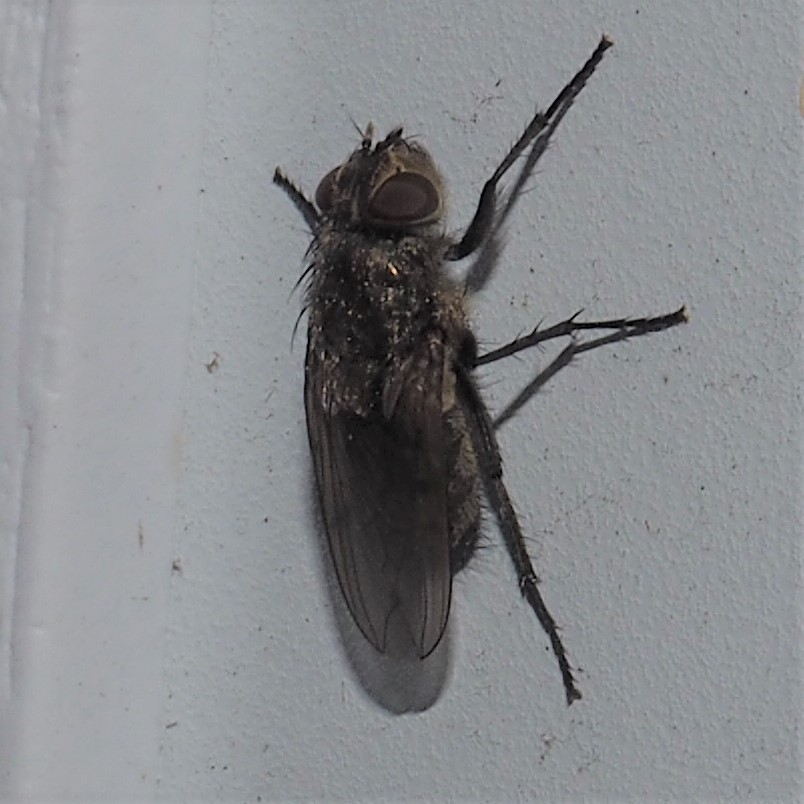
I usually put the Crane Flies before the others, going alphabetically, but decided all rules are off now, so here are a couple. The first one is seems different from the next two images, which are of the same fly.
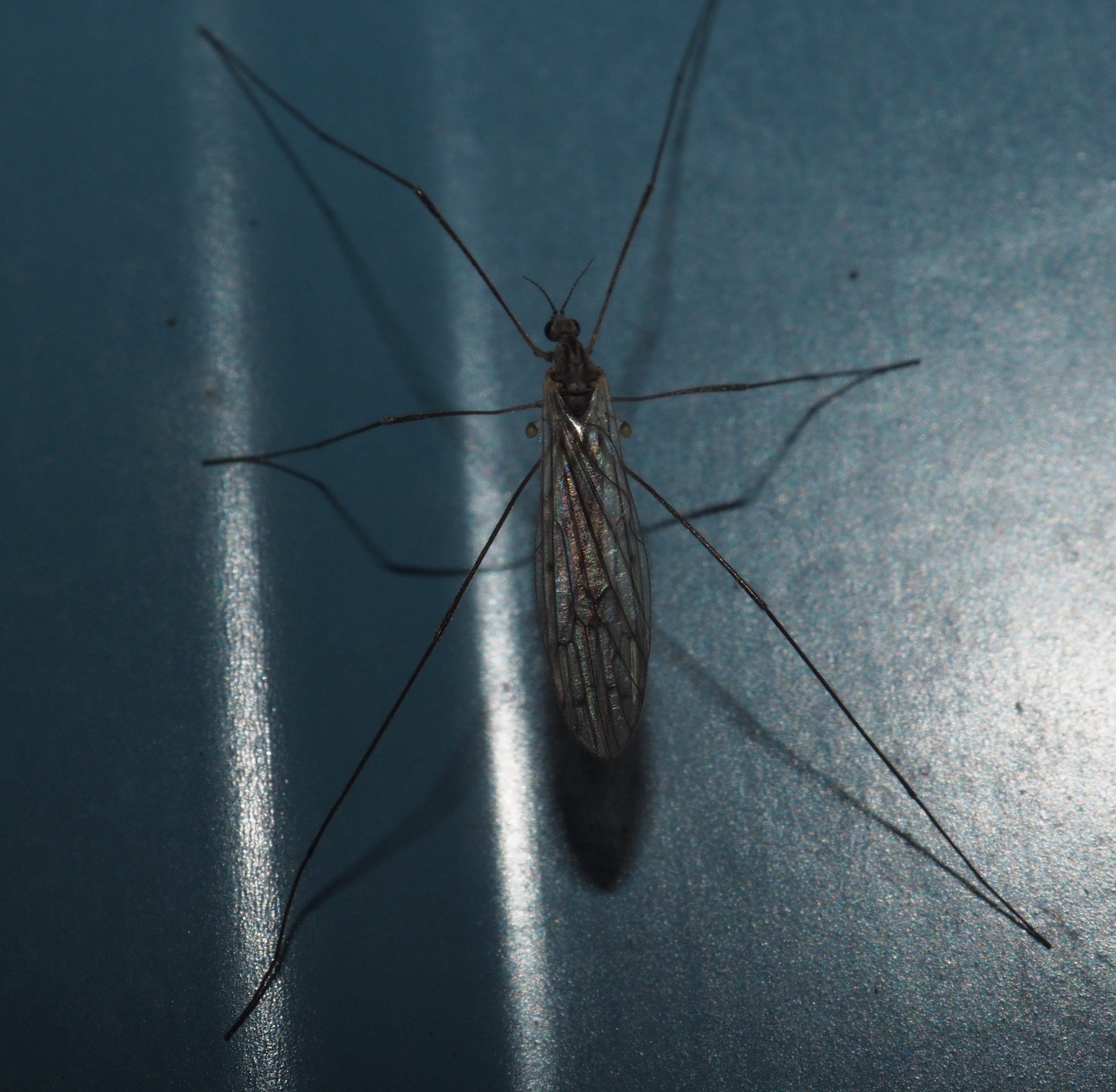
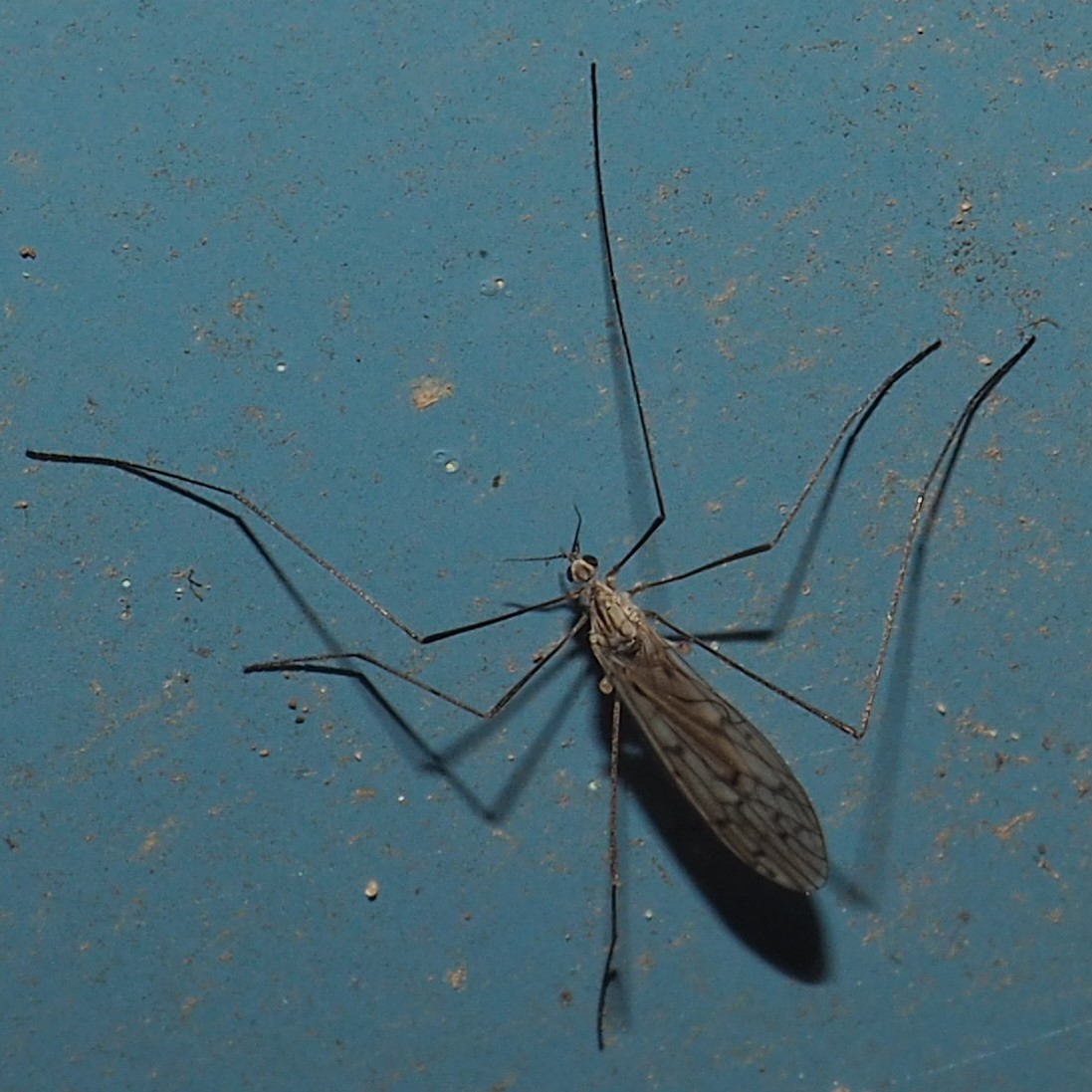

The fishes are pretty active these days, although most of the time they will be under a floating leaf or the little round heater. Still too early to feed them and get them accustomed to being called. But they seem to have kept fat on a diet of decaying matter. The big red one was contributed from someone who couldn't keep it over the winter. You can see a bunch of brown fishes - they are the result of inbreeding. When I can go to the pet store I'll have to buy a couple of calicos to augment the gene pool. But that won't be today.
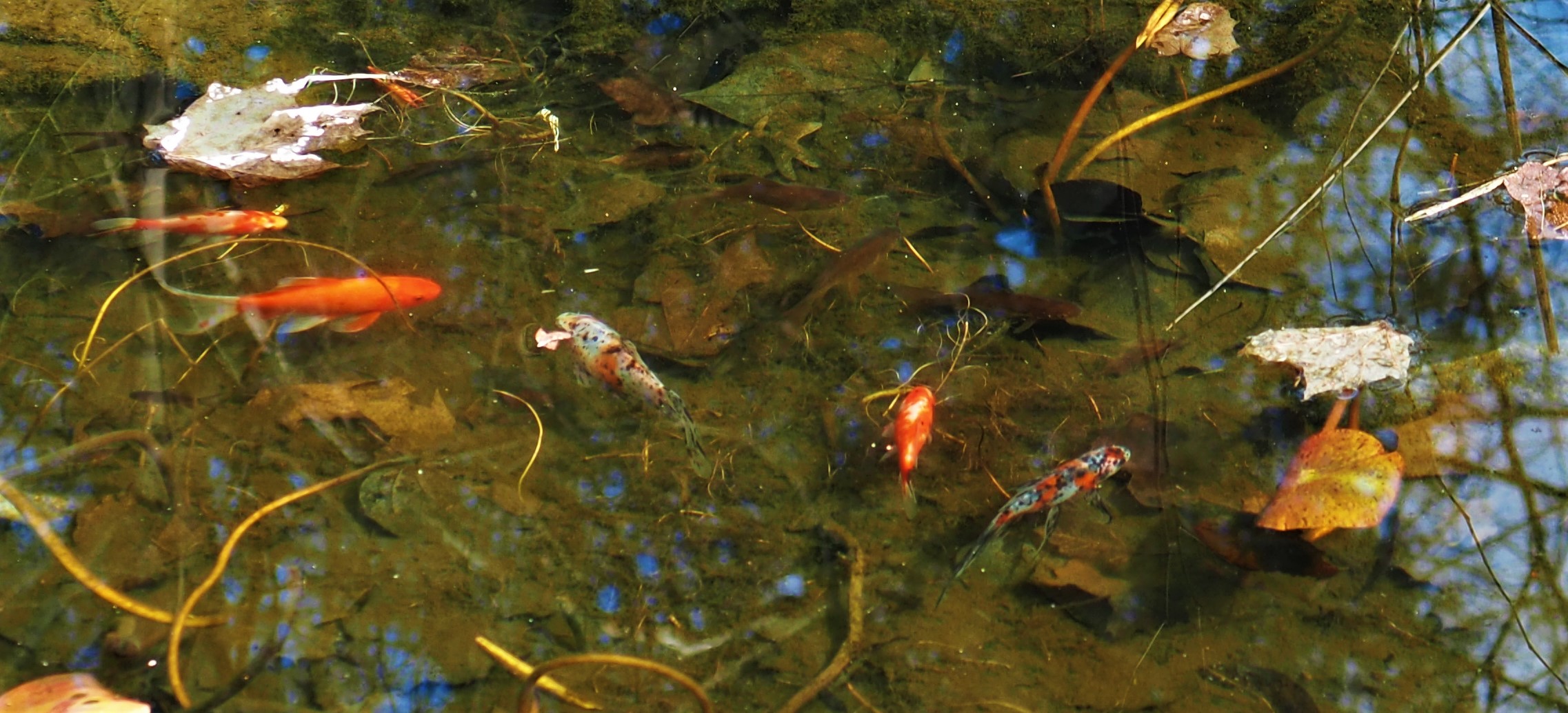
The brightly colored fish in picture 1 is a shubunkin, a breed that specializes in lots of bright blue, red, and other colors. The lower fish in the next picture is Fanny, a robust breeding female who lent her colors to many babies, including most of the mixtures in all these pictures. Fanny died during last summer but left behind a colorful family. Later one of the brown fish suddenly turned out to be a female, along with one of the light blue blends who had been a male for many years. I've heard of fish who change sex when needed to keep the population going. If this observation is correct, it may have happened in our pond!
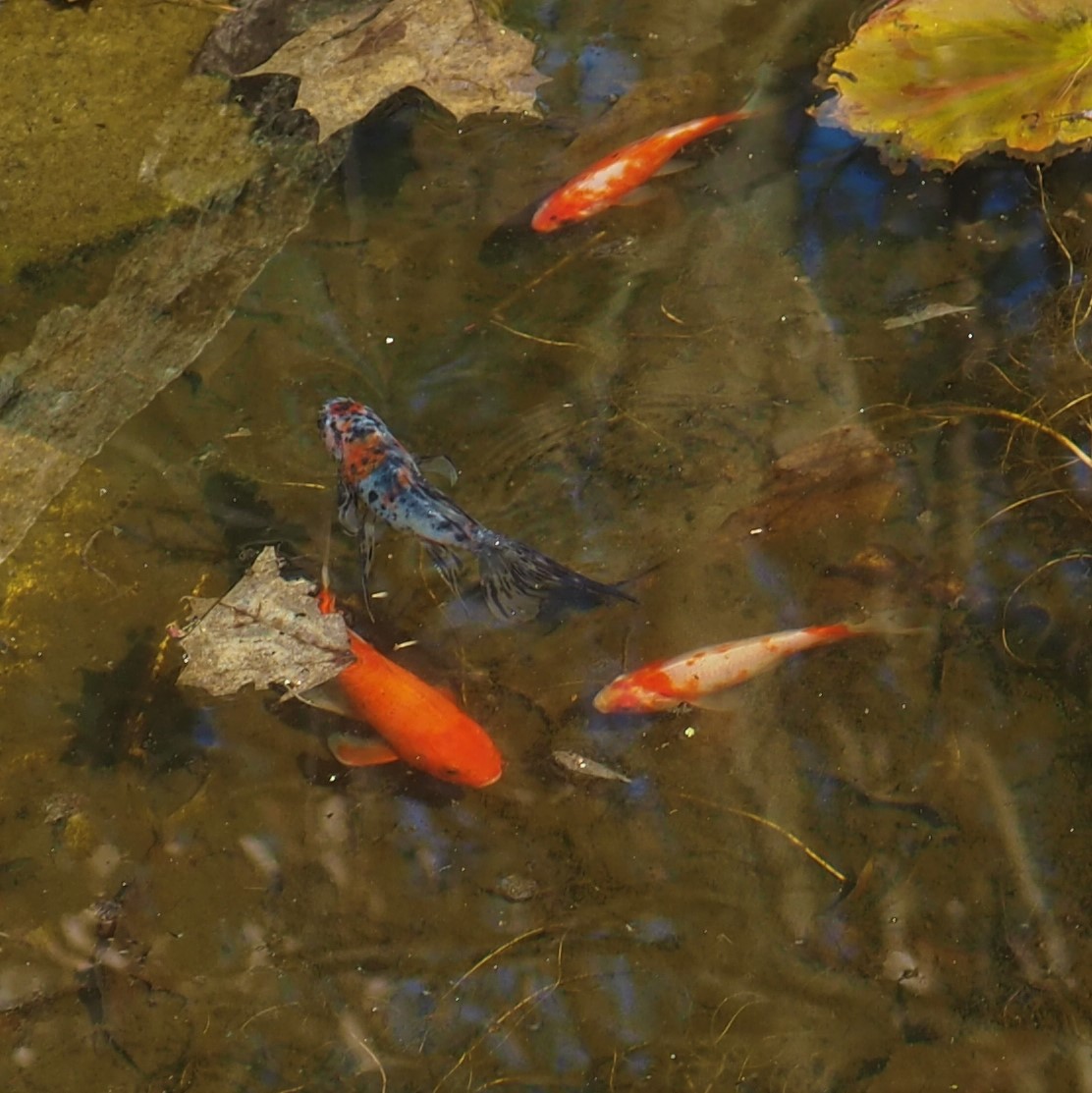

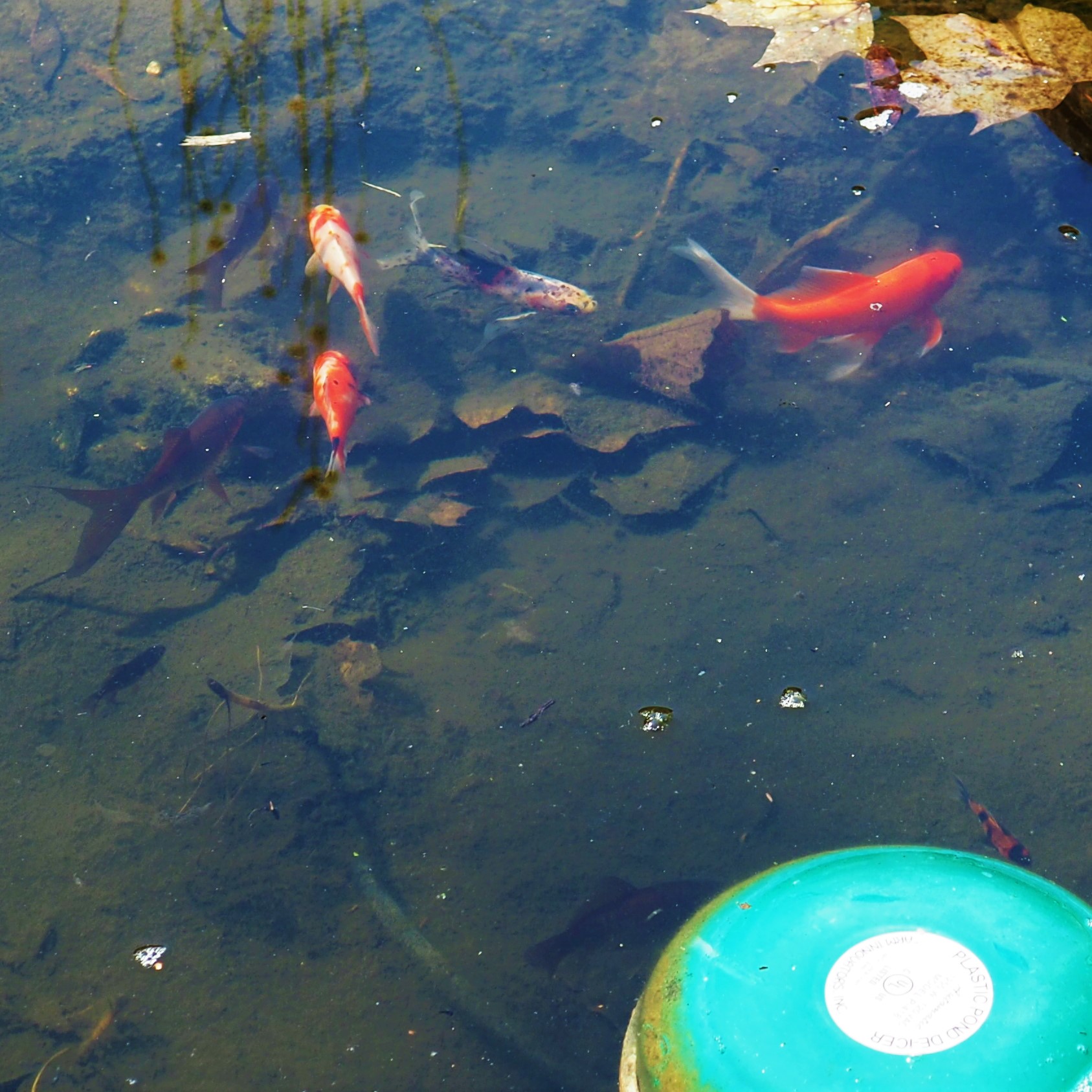
Here are some plants getting ready for the season. First is a batch of grape hyacinths budding up int the front yard. Next is the Purple Hellebore in the same yard with its big buds about to rise up above the leaves. Third is the Japonica (Japanese Quince) budding prolifically in the side yard.
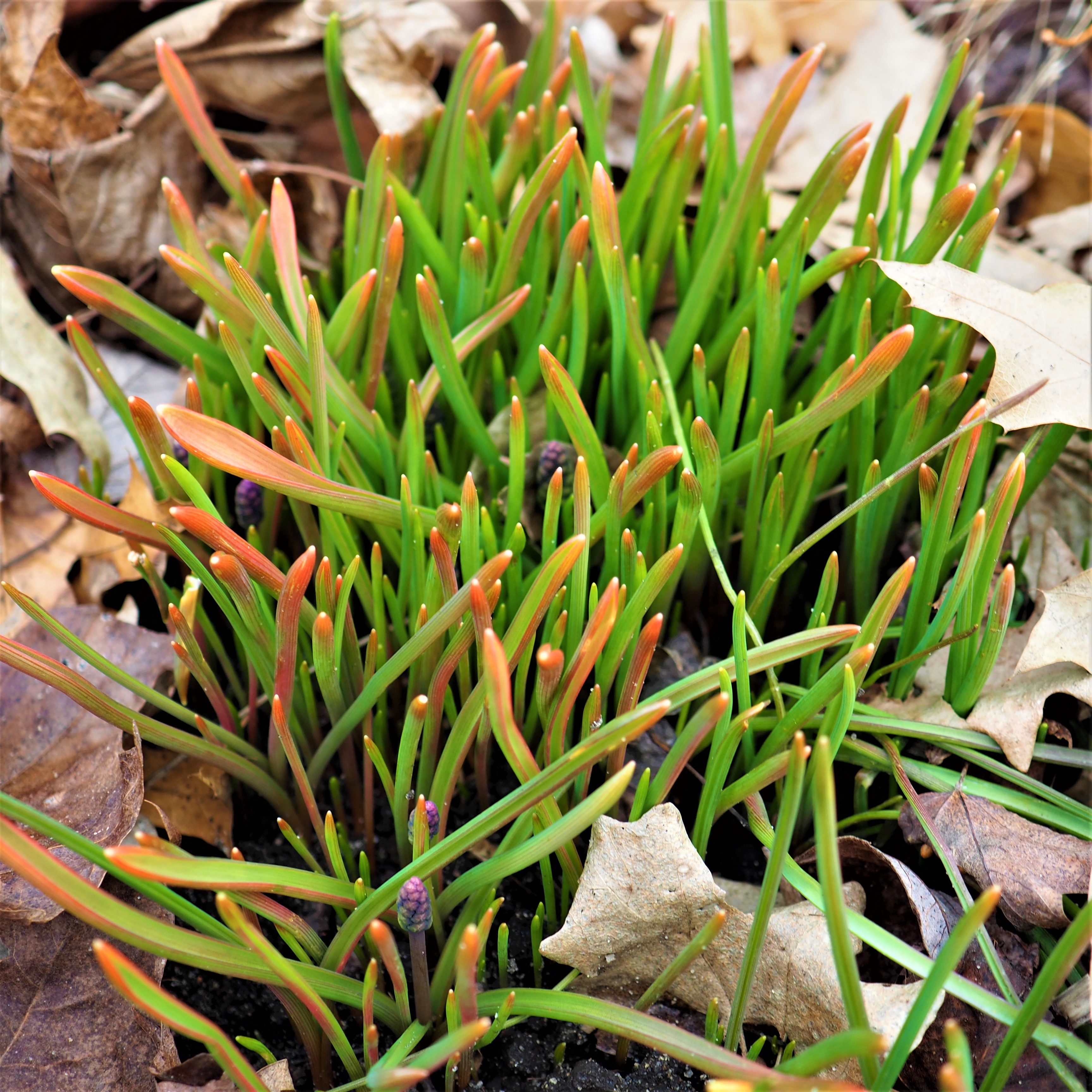

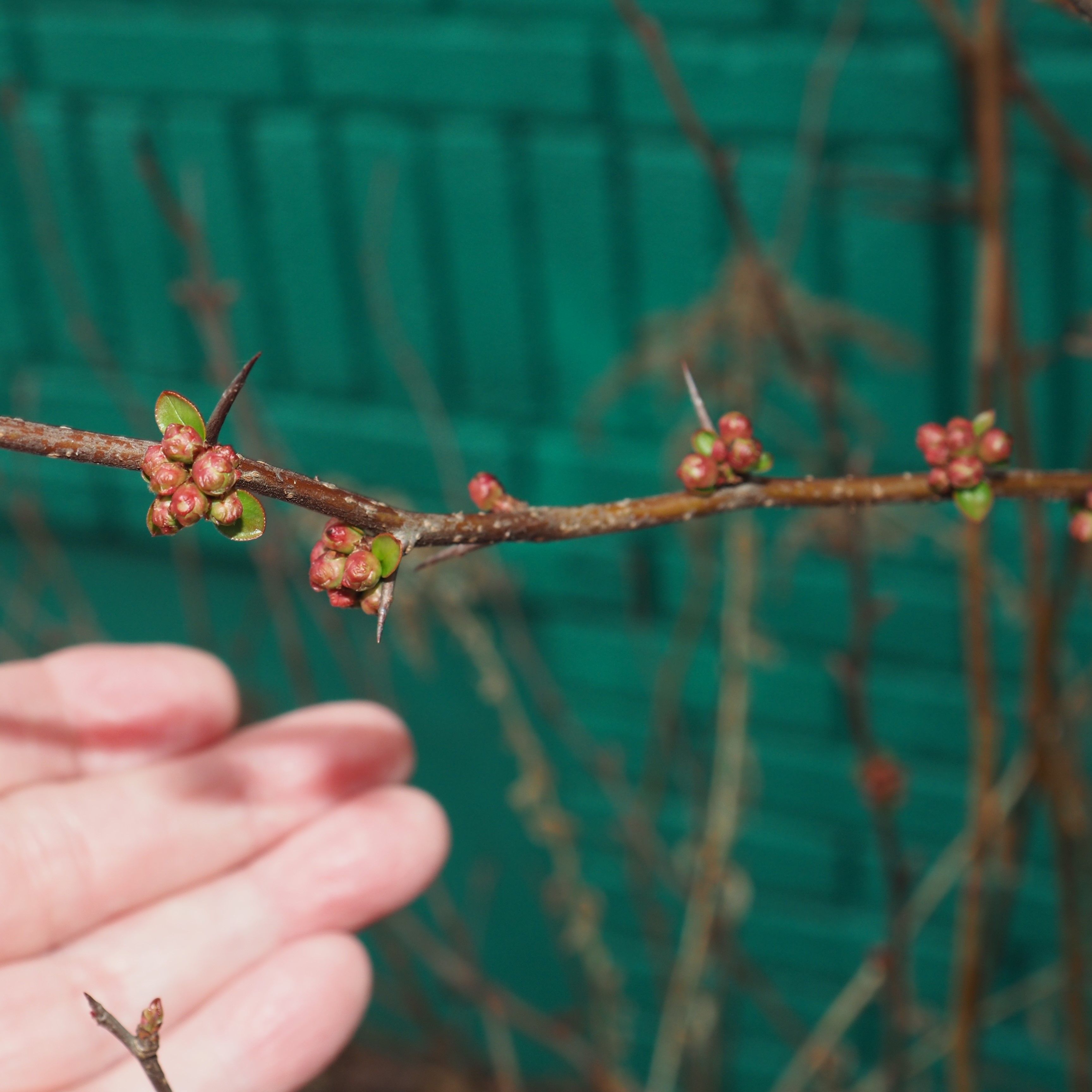
Our snowdrops are passing their peak, but still lovely in spots. This bunch was blooming in my back yard. That is somewhat interesting because remember the winter aconites are almost invisible in the back but still pretty out front. Just once more to compare with some from the Seelys' yard from last time. See how the second bunch have an extra bit of green on their inner petals - they are (once more) Greater Snowdrops. Mine only have the lower patch of green on theirs. So (once more) my snowdrops are Common Snowdrops. Oh - the other distinguishing thing. Greaters have wider leaves than Commmons. But nothing common about either one!
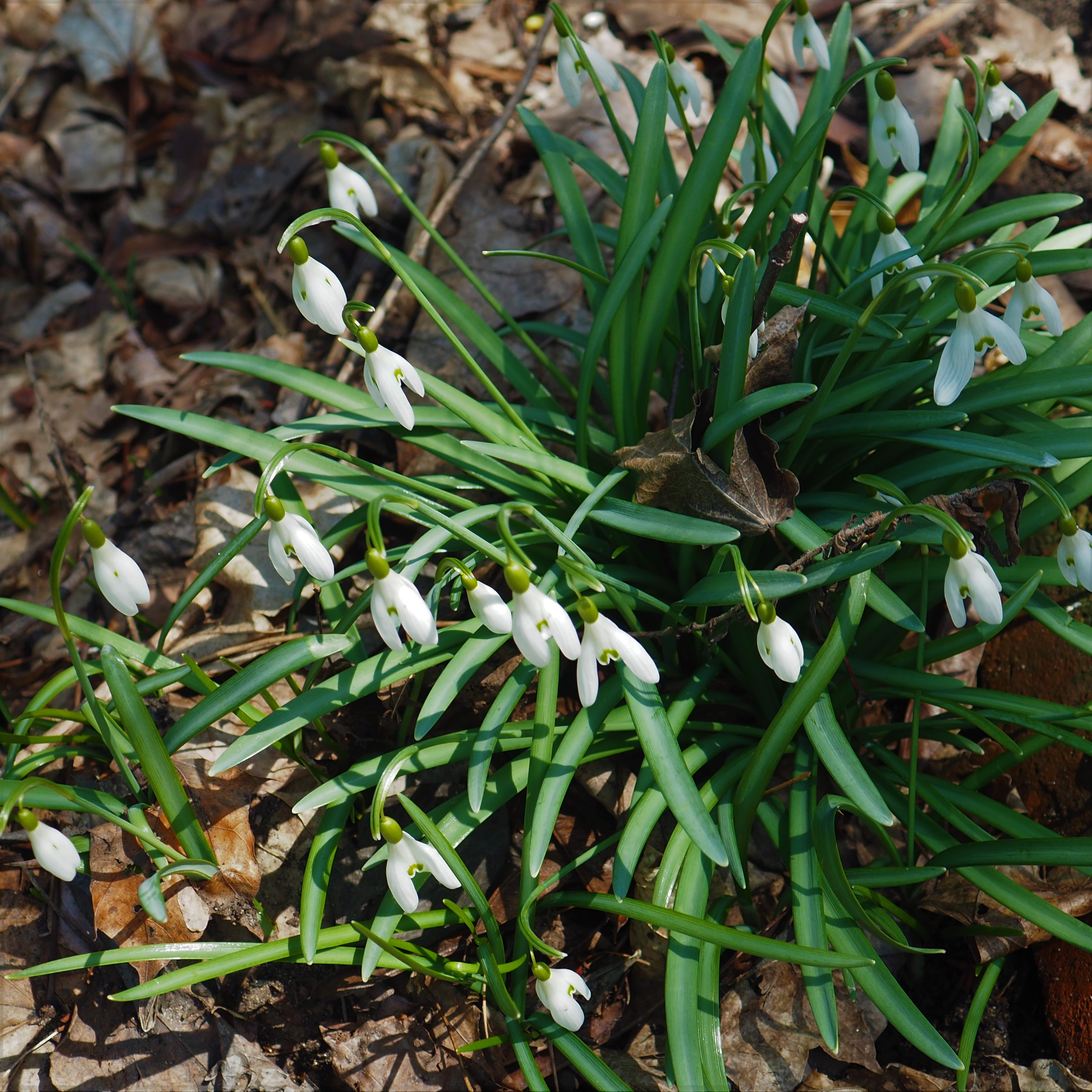

And now dear friends, we have reached that pinnacle of Arthropod creation, the Spiders! You've seen this one a fair amount already. This one was hanging on a wisp of silk for a few days again this week. It is the Cribellate Spider, aka the Feather-legged Spider. It didn't unfurl itself all week as far as I know.
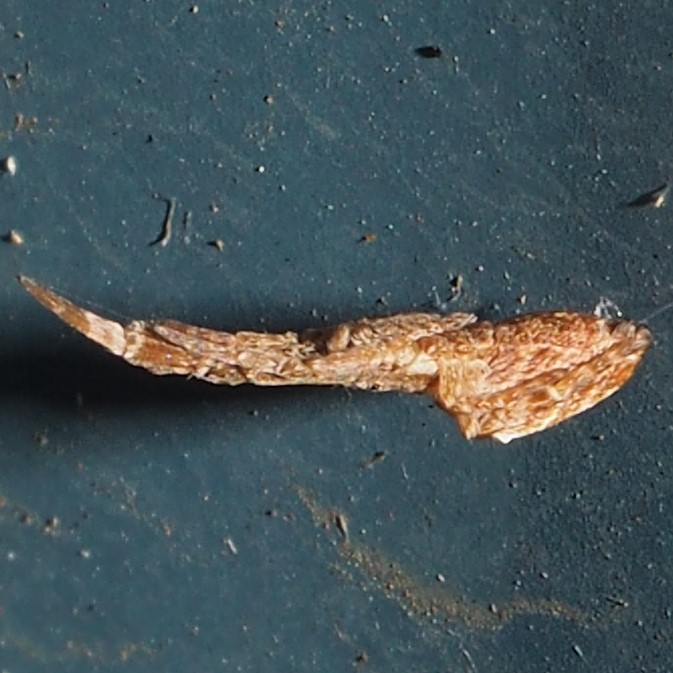
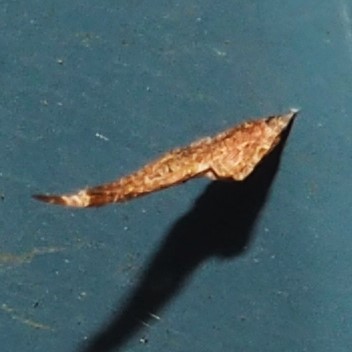
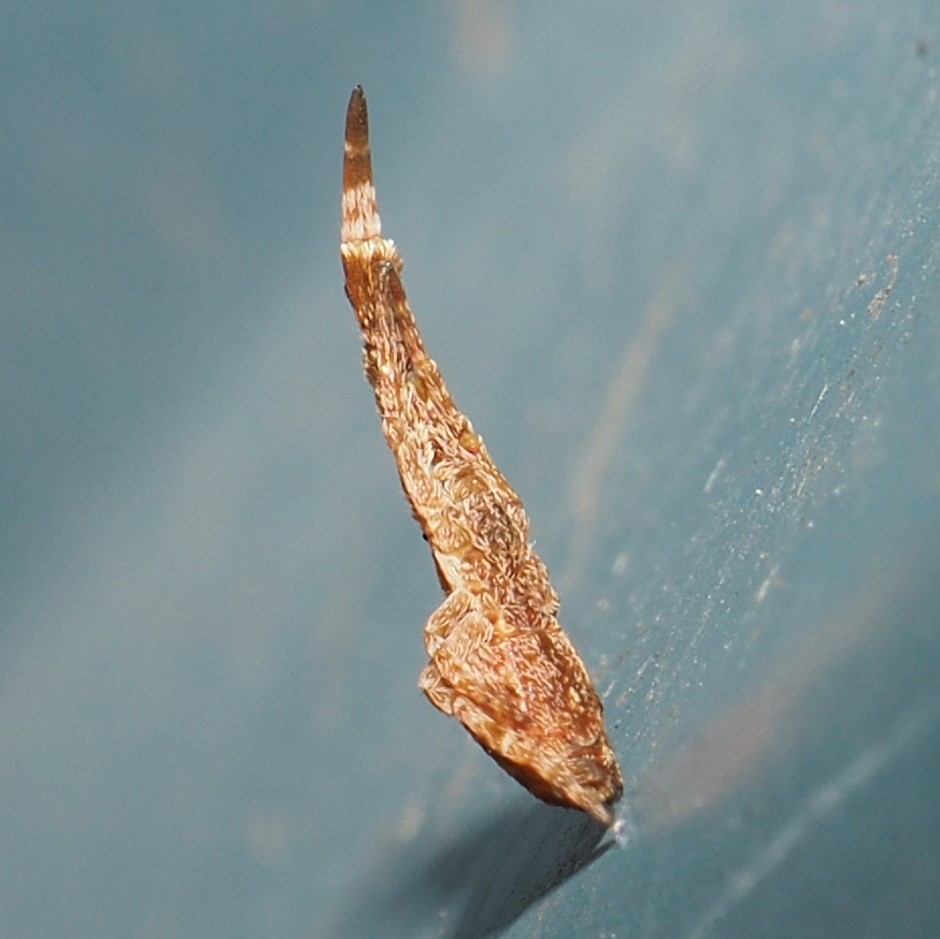
This next one is probably a Cobweb Spider. I am so crazy about the Pirate Spiders that I always translate this pattern to my brain as Mimetus, but I'm practically sure it isn't! We see what we wish for....
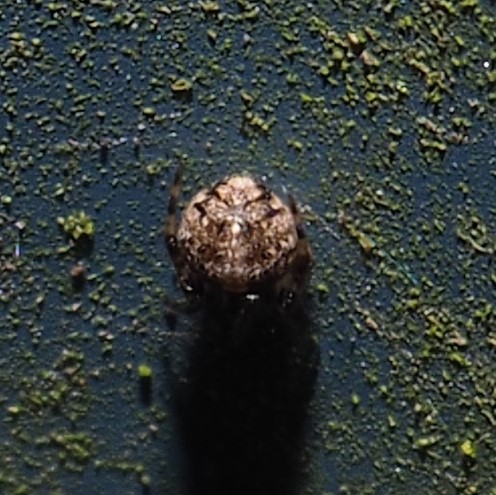
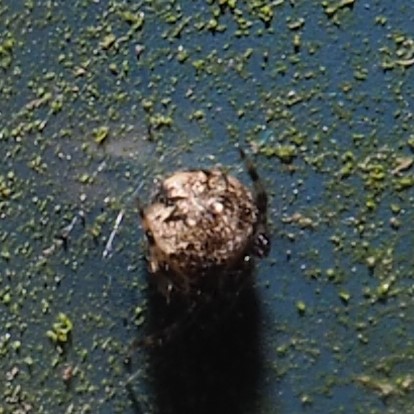

Here's another most likely Cobweb Spider. Its pretty dark red coloring makes it different from most.
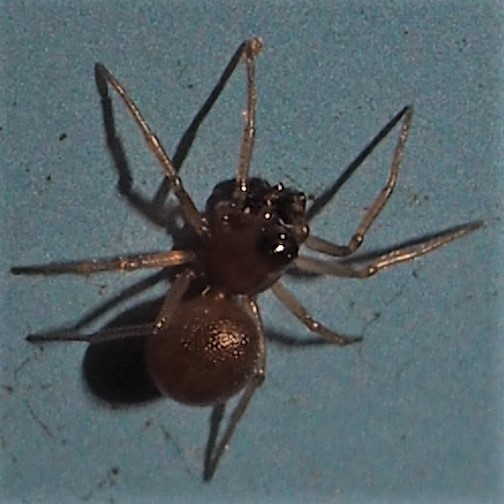
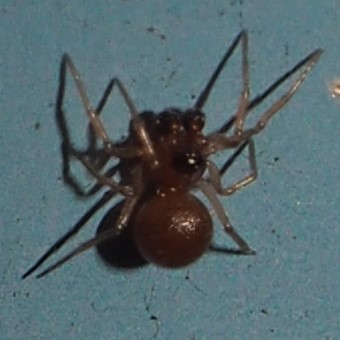
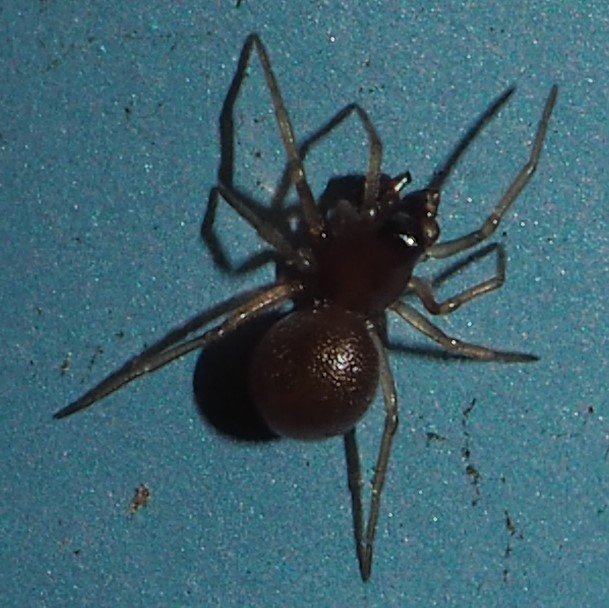
Here's another most likely Cobweb Spider. Matt Claghorn (@claggy on iNat) is so wonderful to have as a friend and Spider recognizer! He suggests that this one might be Yunohamella lyrica. Apparently neither iNat nor Bugguide has this one showing in Michigan so my homework is to submit this one to both of those websites. Thanks for all this time of help, Matt!
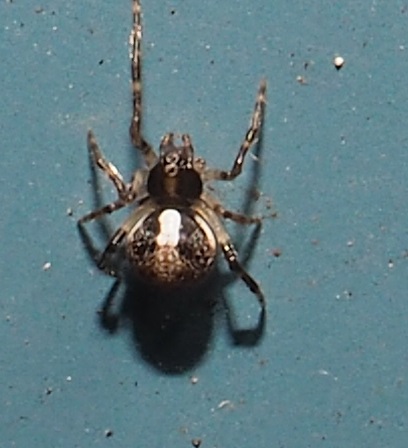
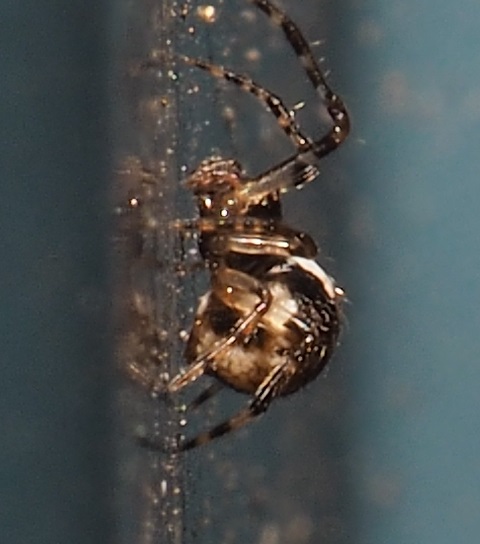
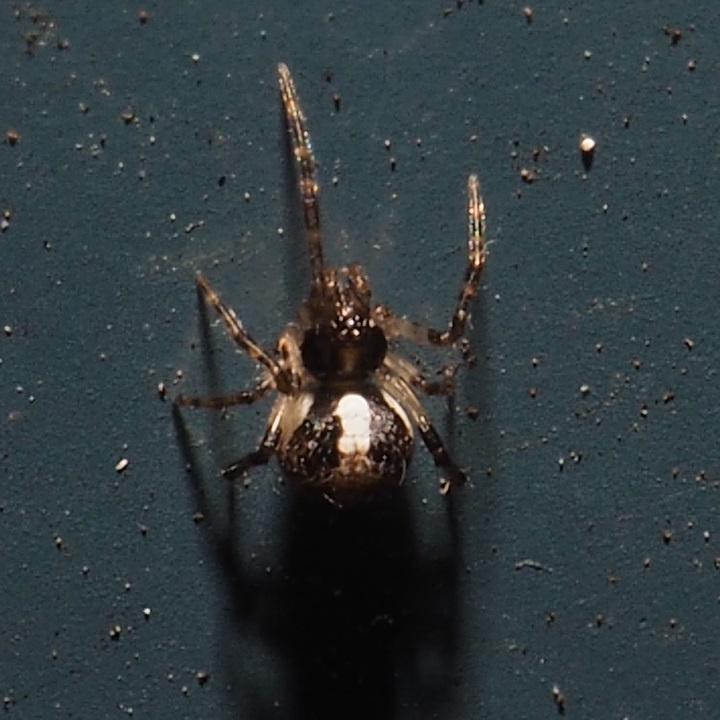
Here's one I'm pretty sure about - It's in the genus Grammonota - you can just barely make out the orange-brown markings that are typical in this Dwarf Spider. This one is a male, as seen from its large pedipalps!
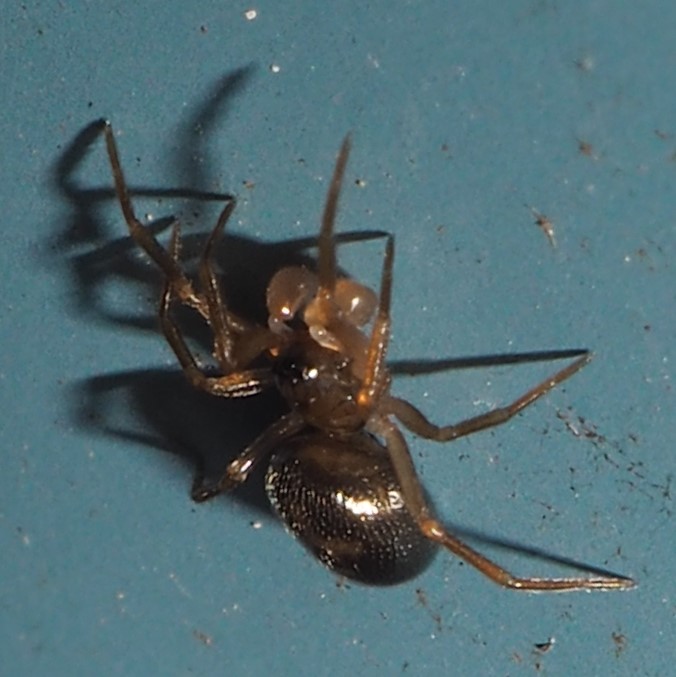
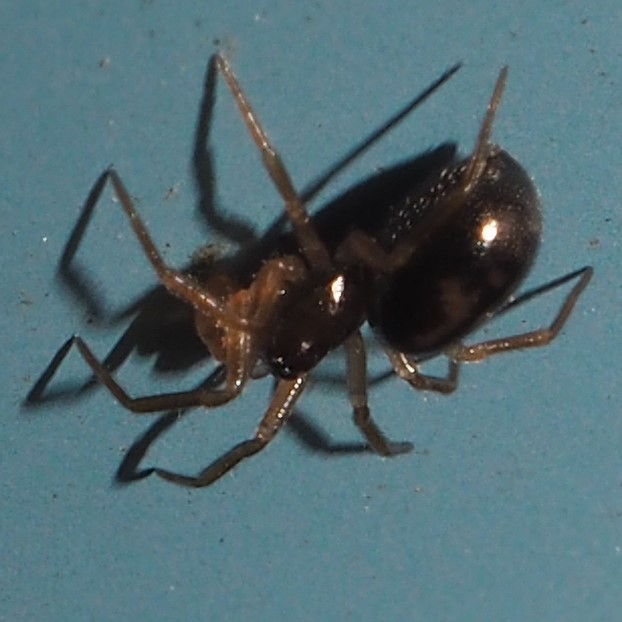
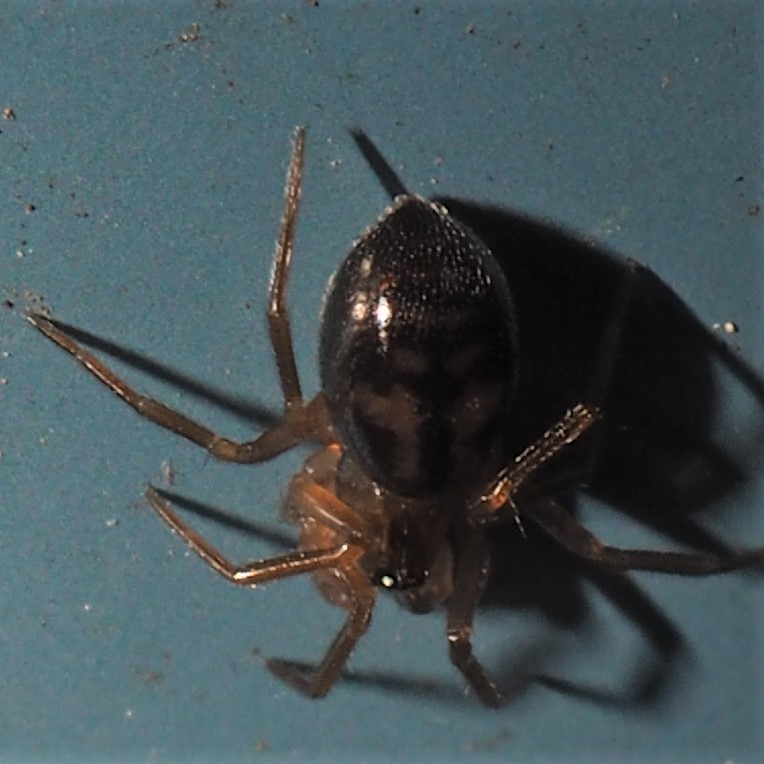
The Common House Spiders (a kind of Cobweb Spider) have been growing and growing. They look different depending on your angle of vision. I think they are kind of handsome. (We also saw a picture of one back in the Beetle section, attacking a few beetles.) I think the first one is a younger one.
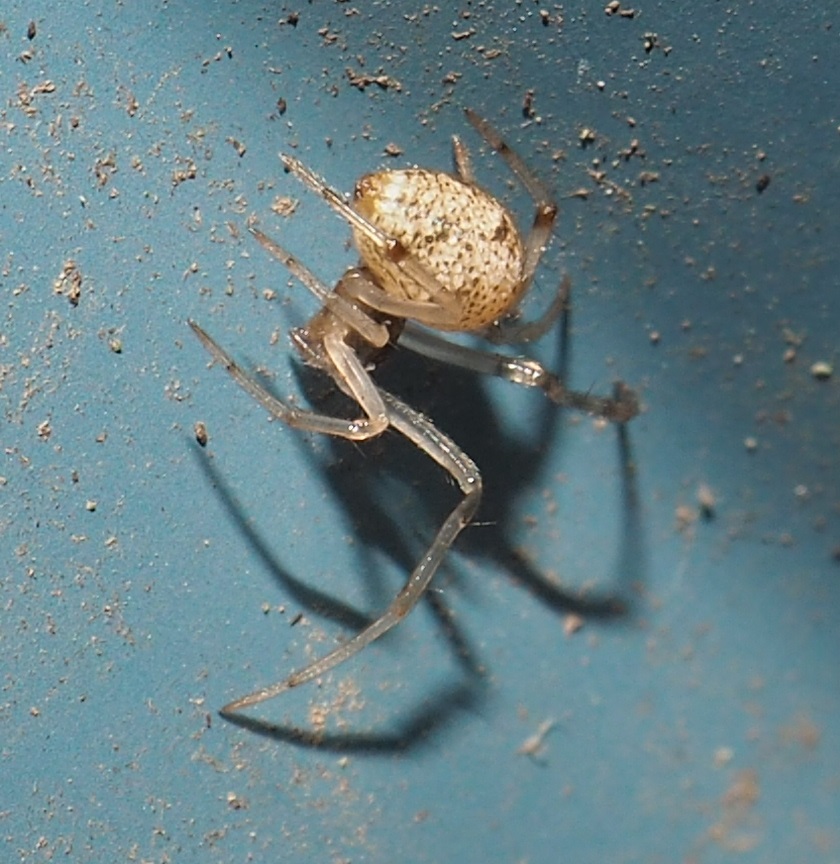
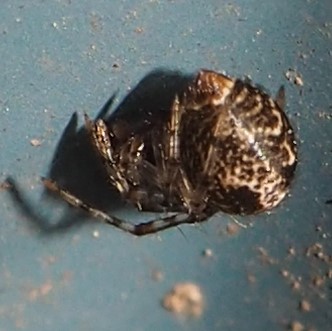
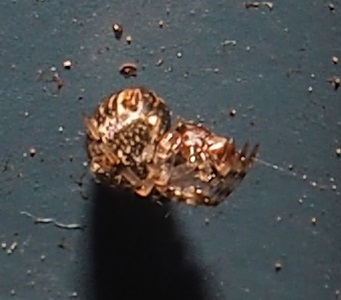
We've seen this Running Crab Spider a few times already this Spring.
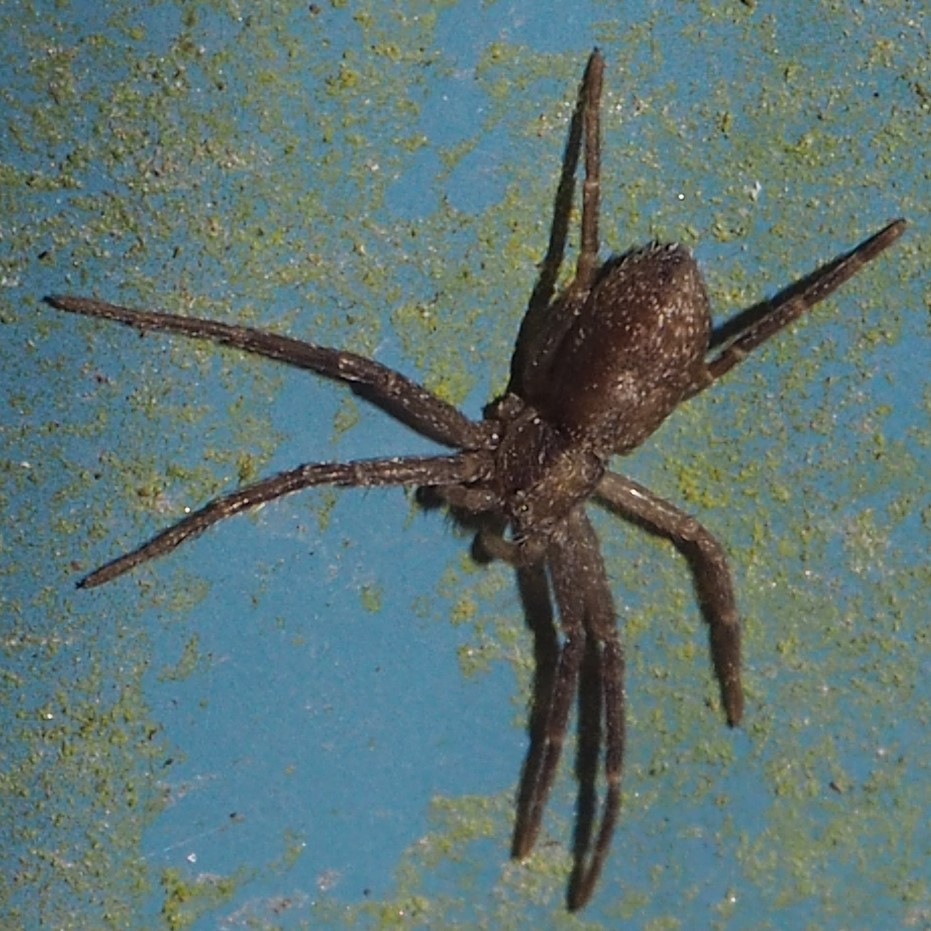
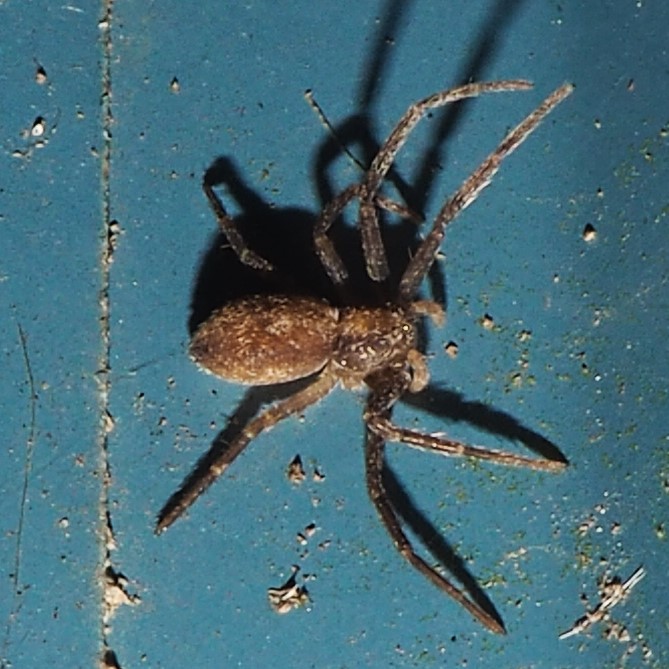
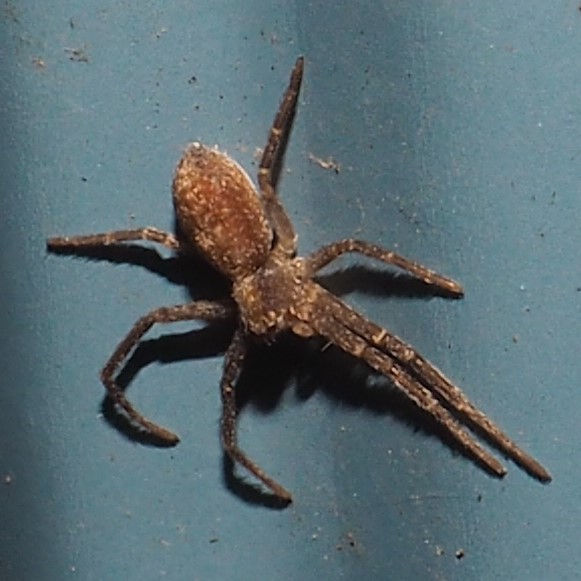
We had several different-looking Sheetweb Spiders. I'm judging by their elongated abdomens.
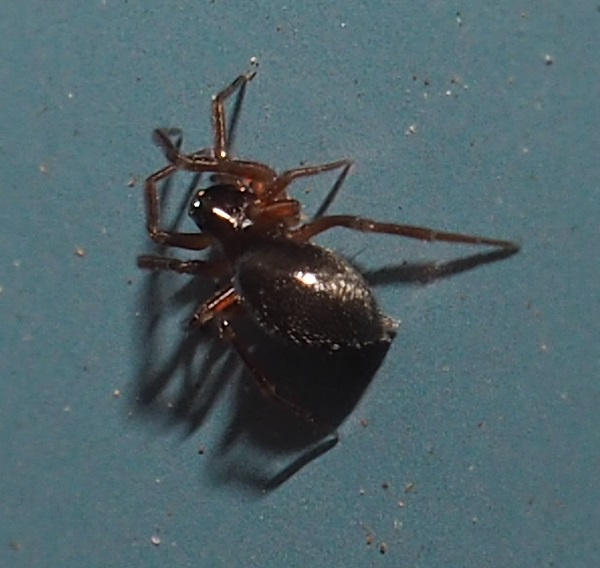
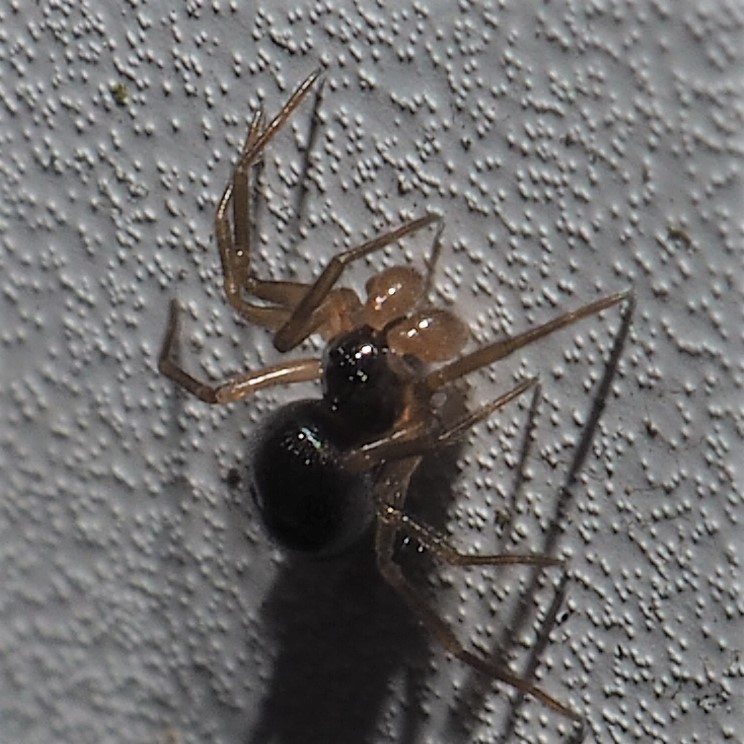
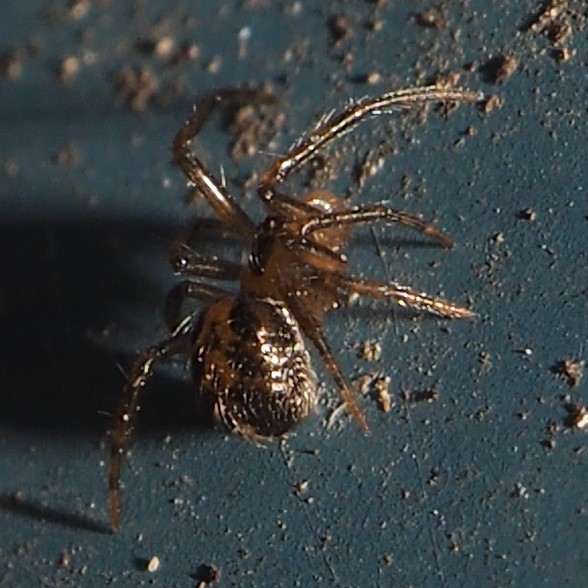
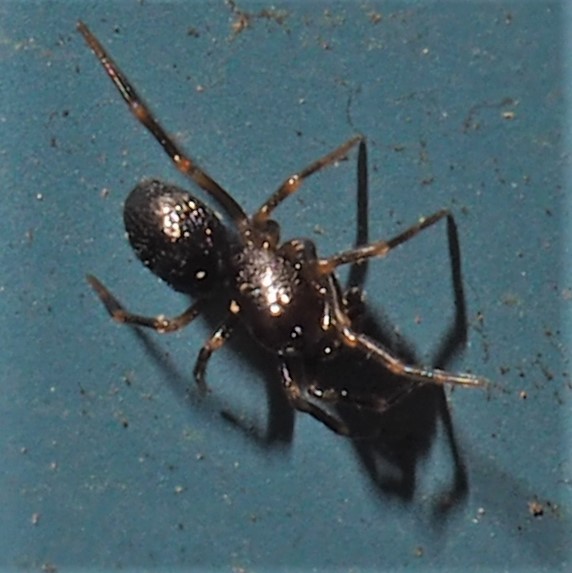
A strange creature hurrying to get her Tartar Treats. It's Spooky, so is in here alphabetically! She loves her treaties the way Big Bunny loved her carrot!

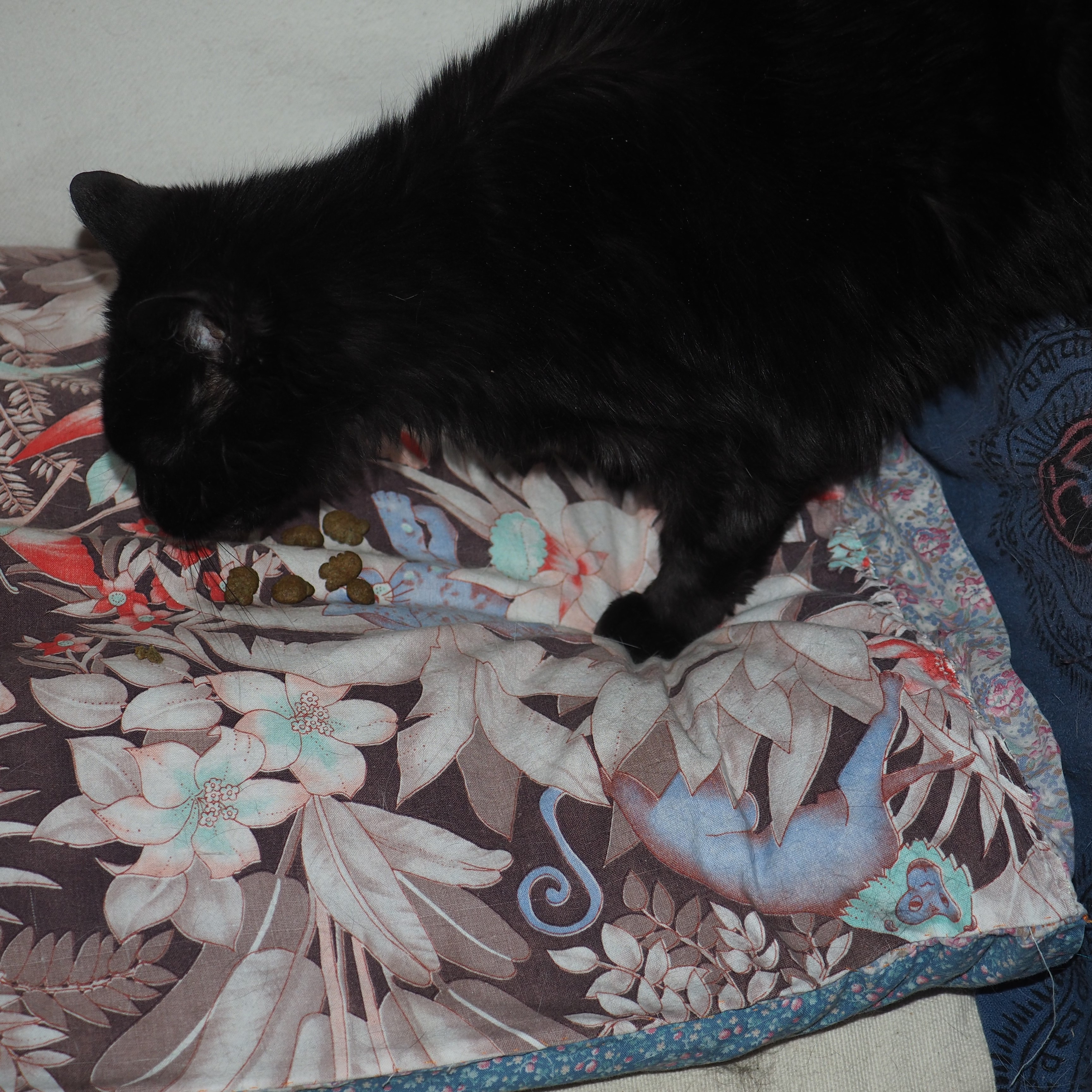
We now have two kinds of Stoneflies. The one we saw last time was a Winter Stonefly. Last week though we began to see one that was only about half as long as the first. It is apparently a Small Winter Stonefly.
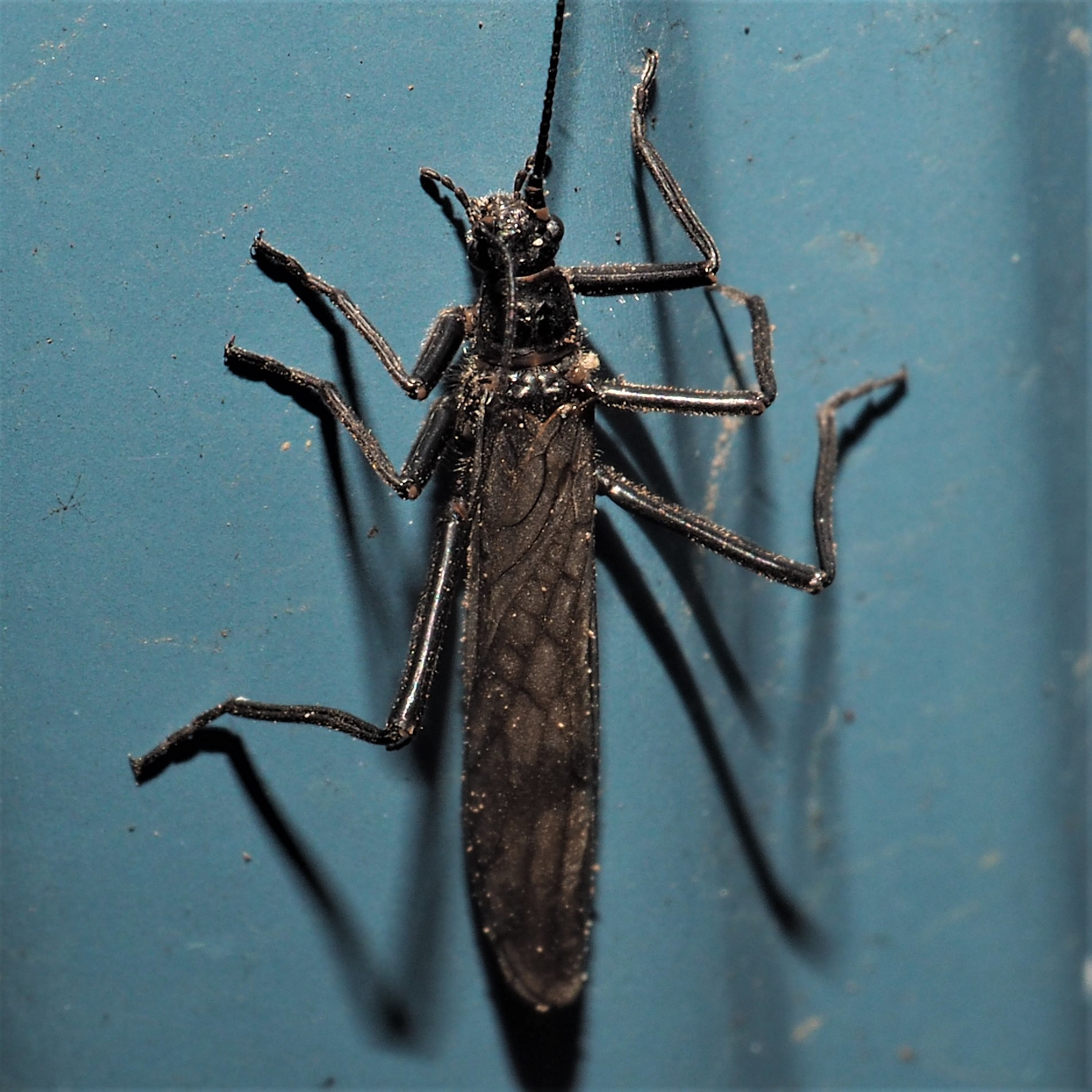
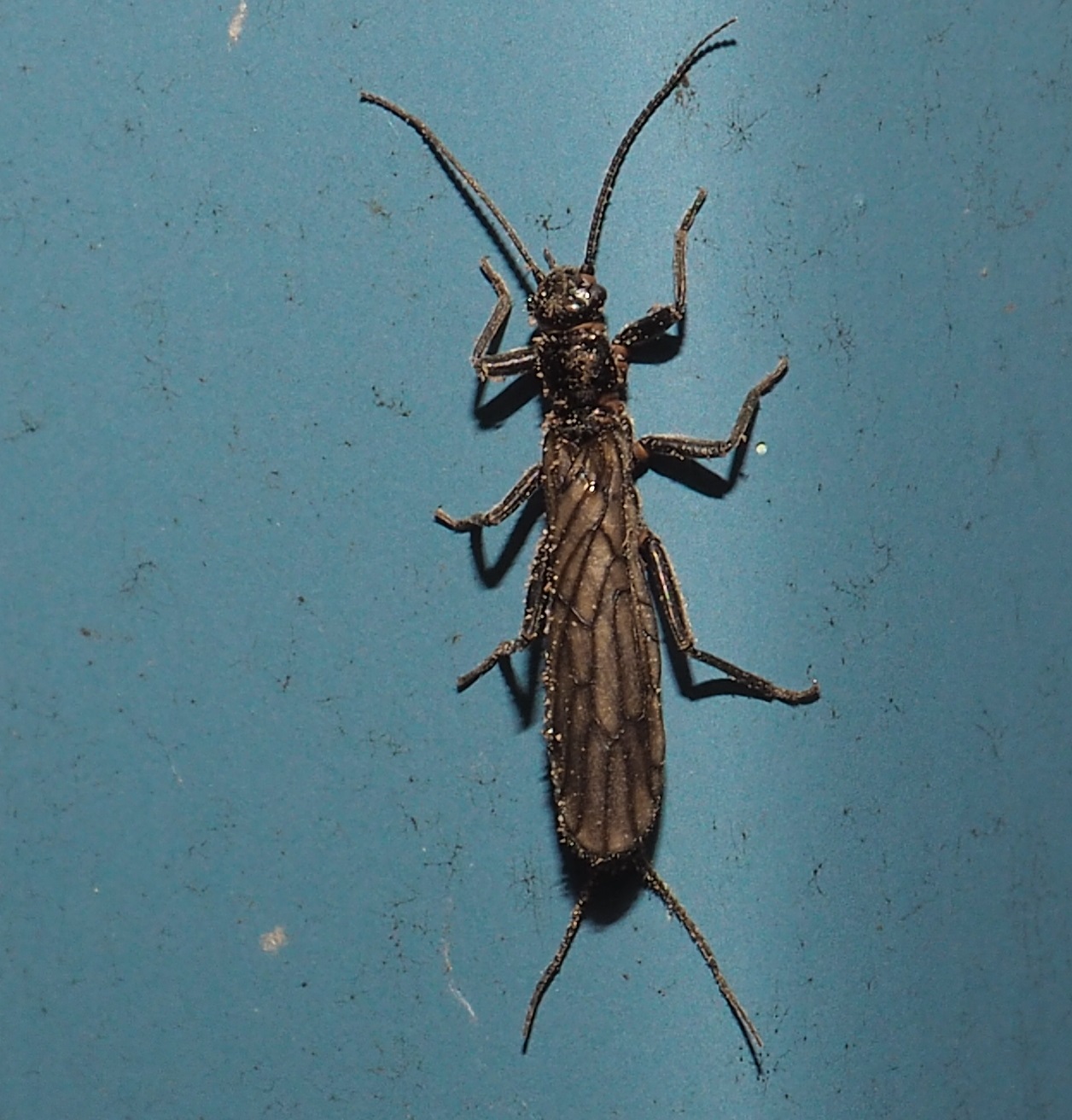

Down to the wasps! I'm pretty sure this little tiny one that looks like a little fly is an Encyrtid Wasp. They tend to have a bit more iridescence than most wasps. Next is another tiny one, but I really don't know- wasp or fly? Third I do know - it is the first Paper Wasp I've seen this season - a European Paper Wasp, to be exact. From the way it is sitting on this window sill I believe she is beginning to gather wood pulp to turn into her paper nest.
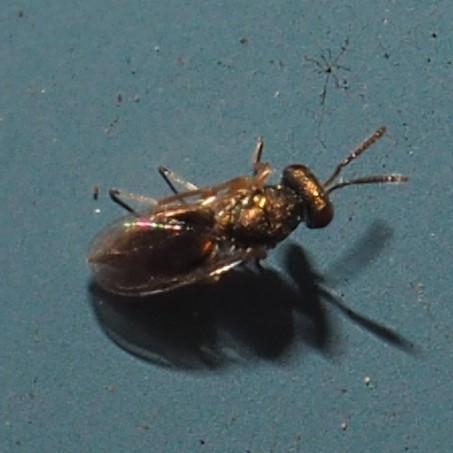
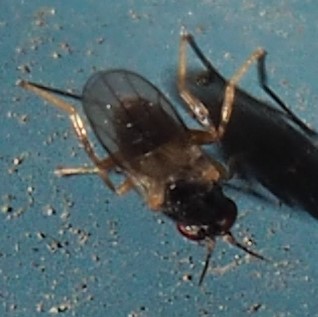
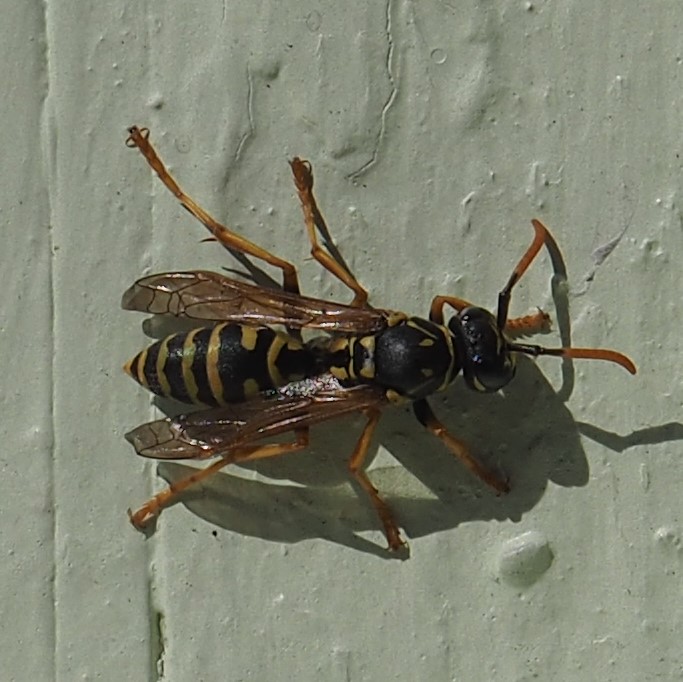
Some more crocus shots. This white crocus is in a spot that was the scene of quite a bit of brick rubble when the chimney collapsed in the fall. Next are the "easy-spread" purple crocus that Debby Seely gave me years ago, and it does propagate itself amazingly fast. Last is the Early Spring Crocus.
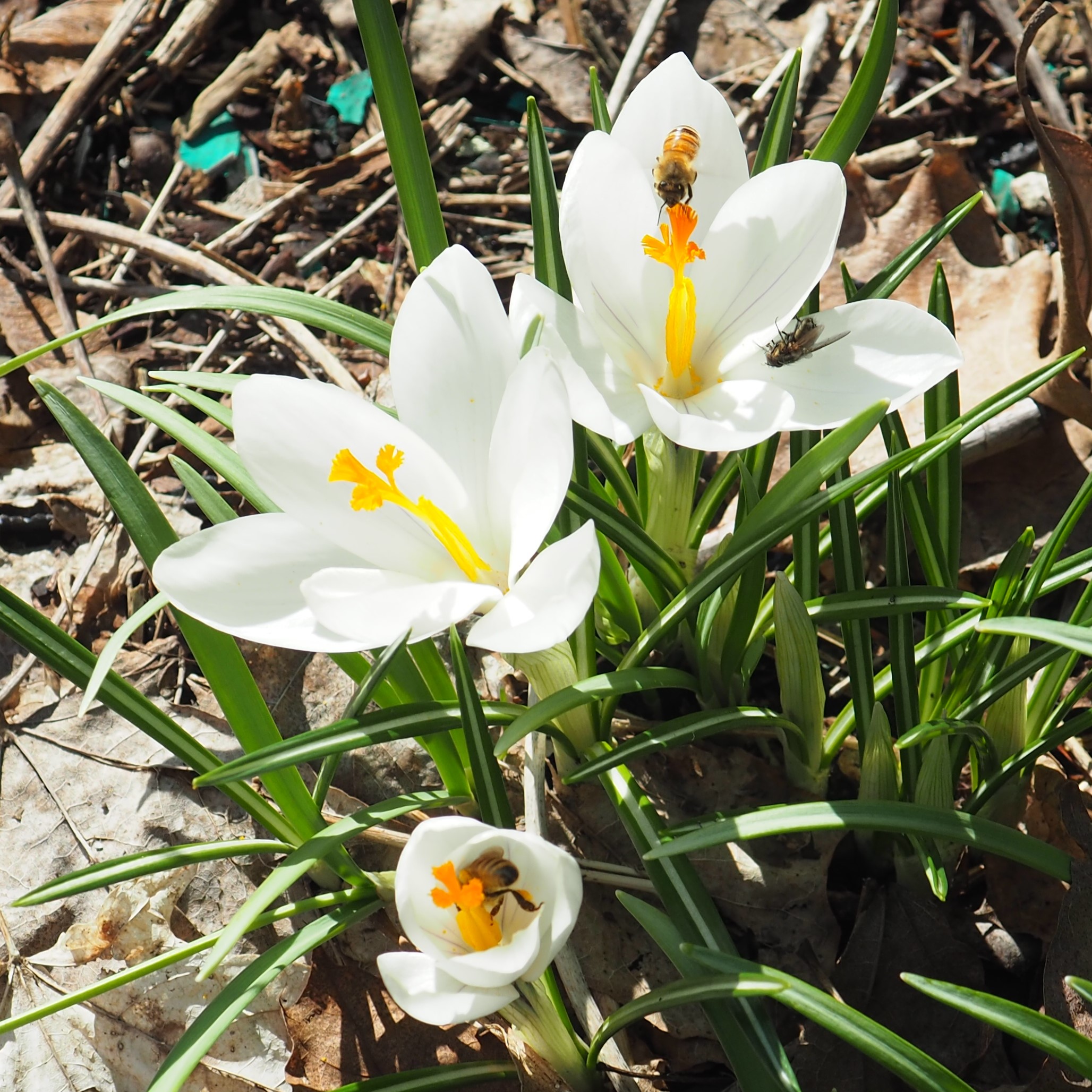
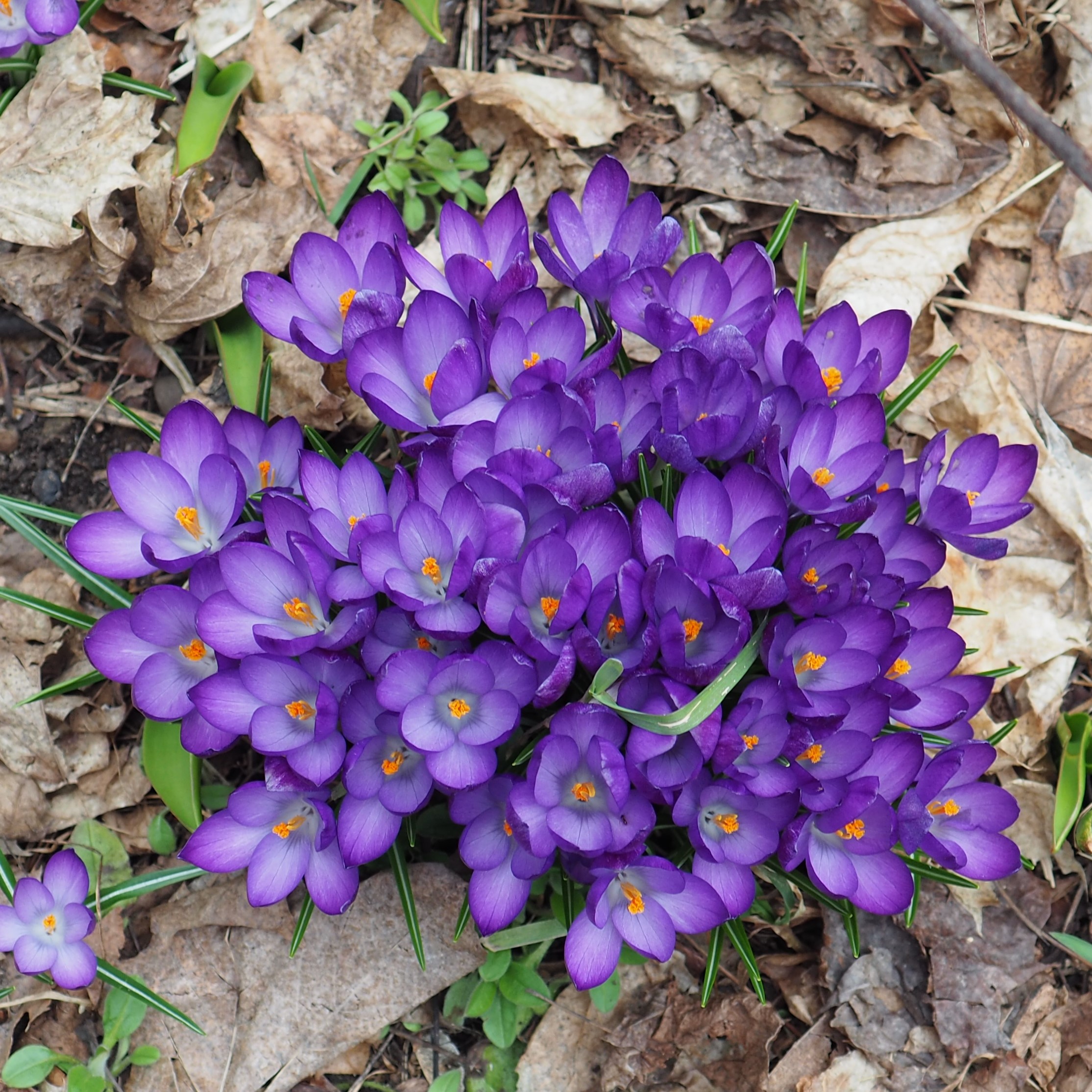
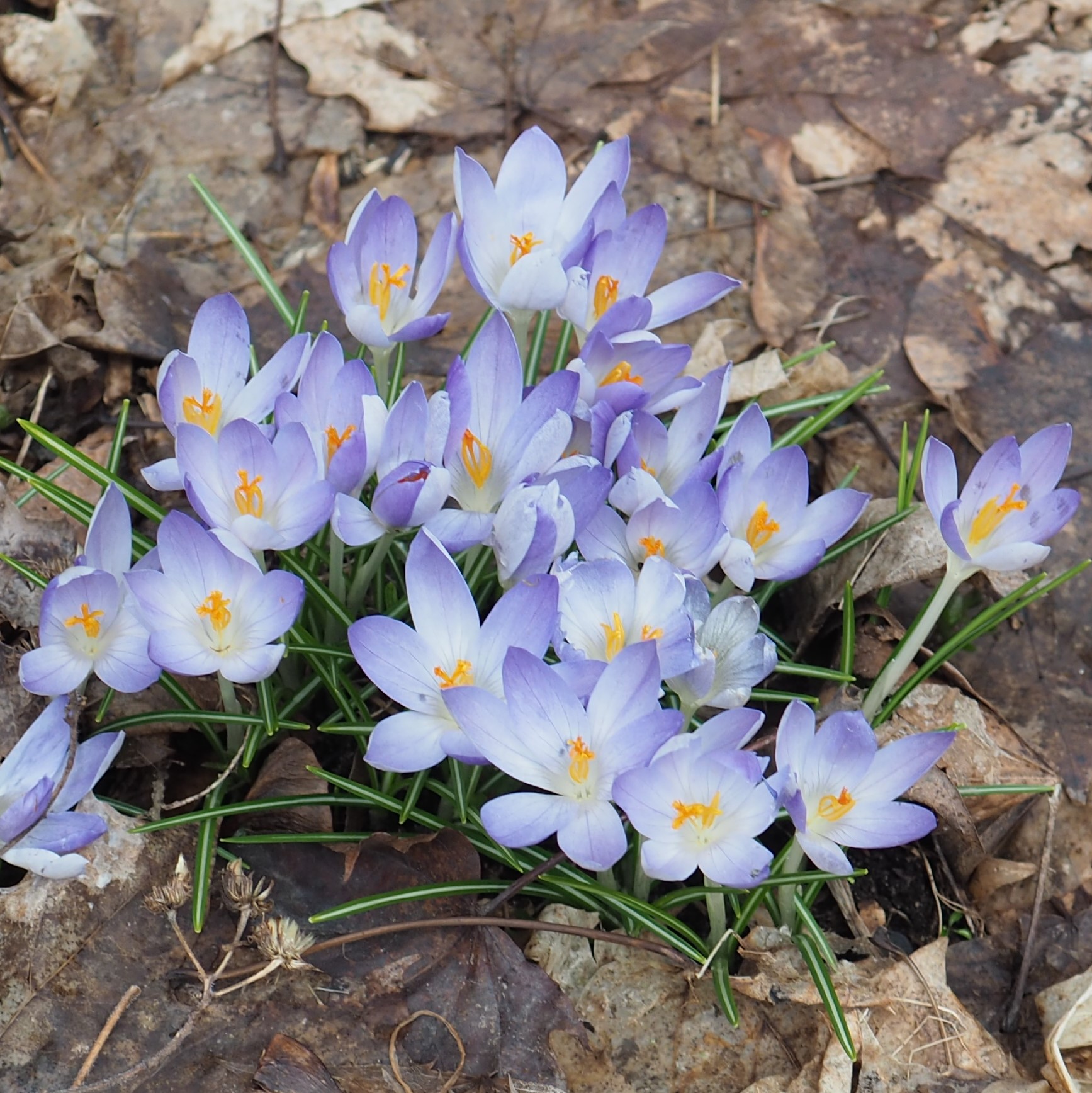
One thing that keeps me going is experimenting with the color-morphing. Here are some mutations of the tiny crocus you saw last week. You may copy and use these to send to people you want to cheer up!
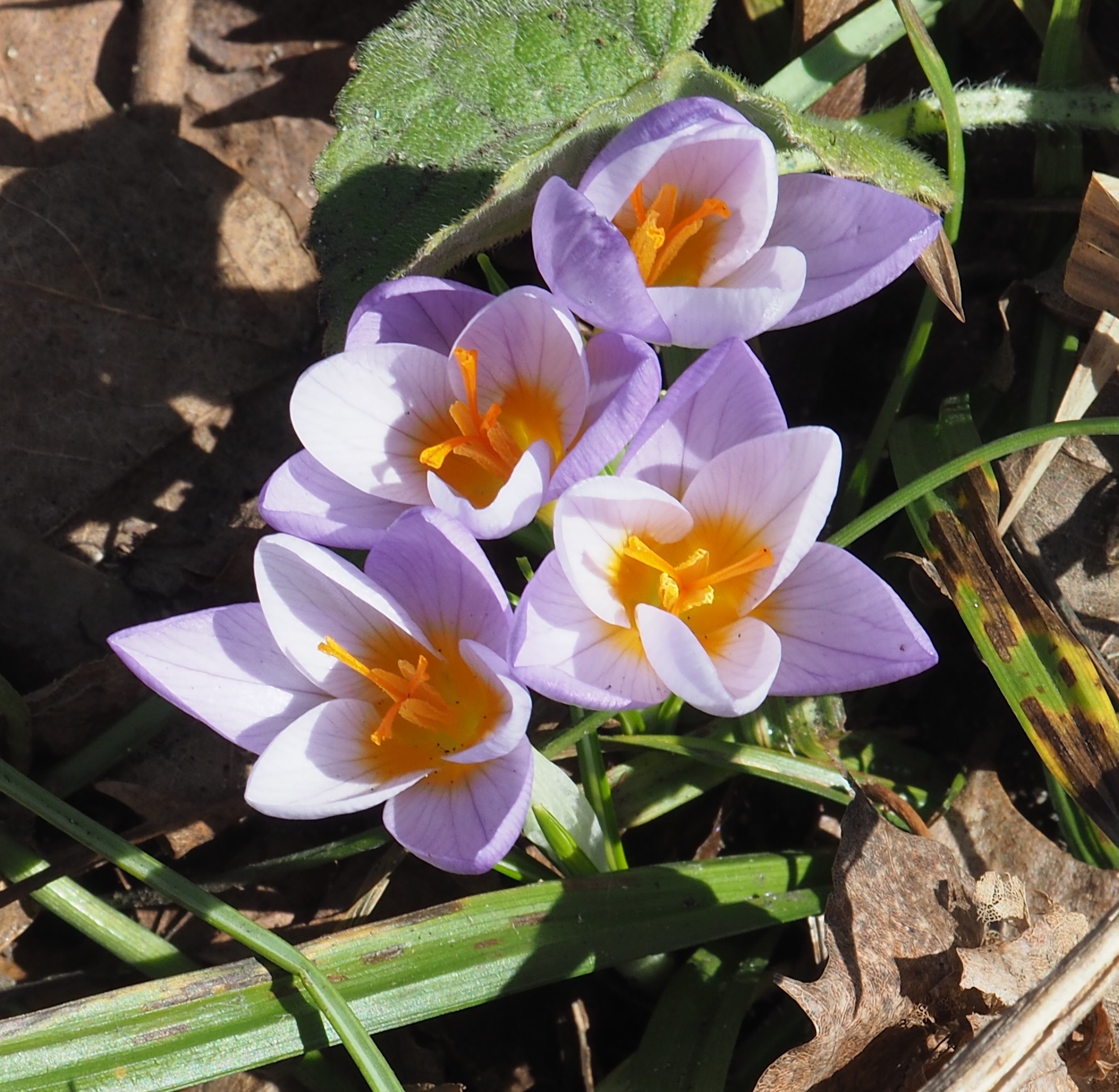
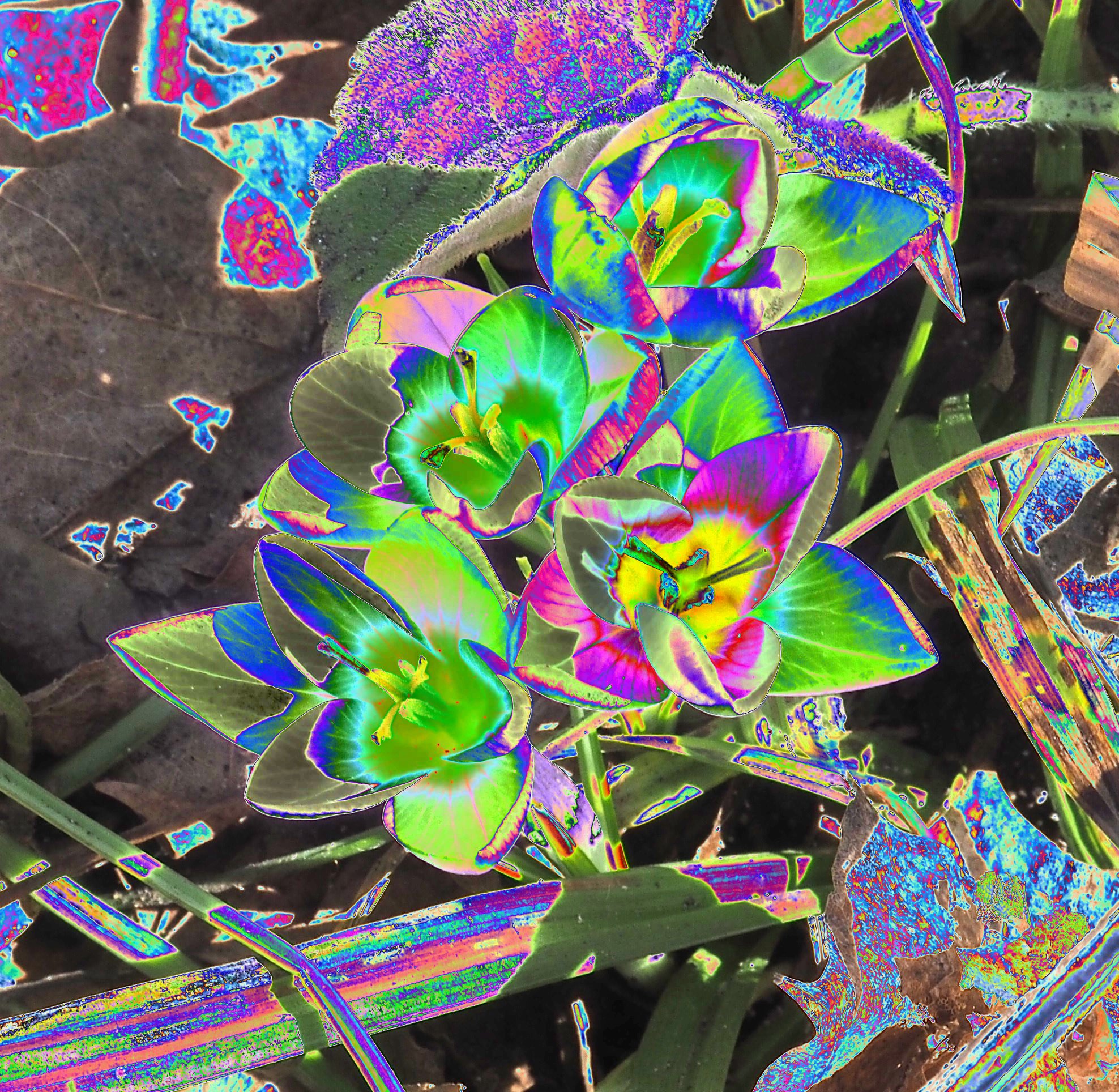

More transmogrifications.
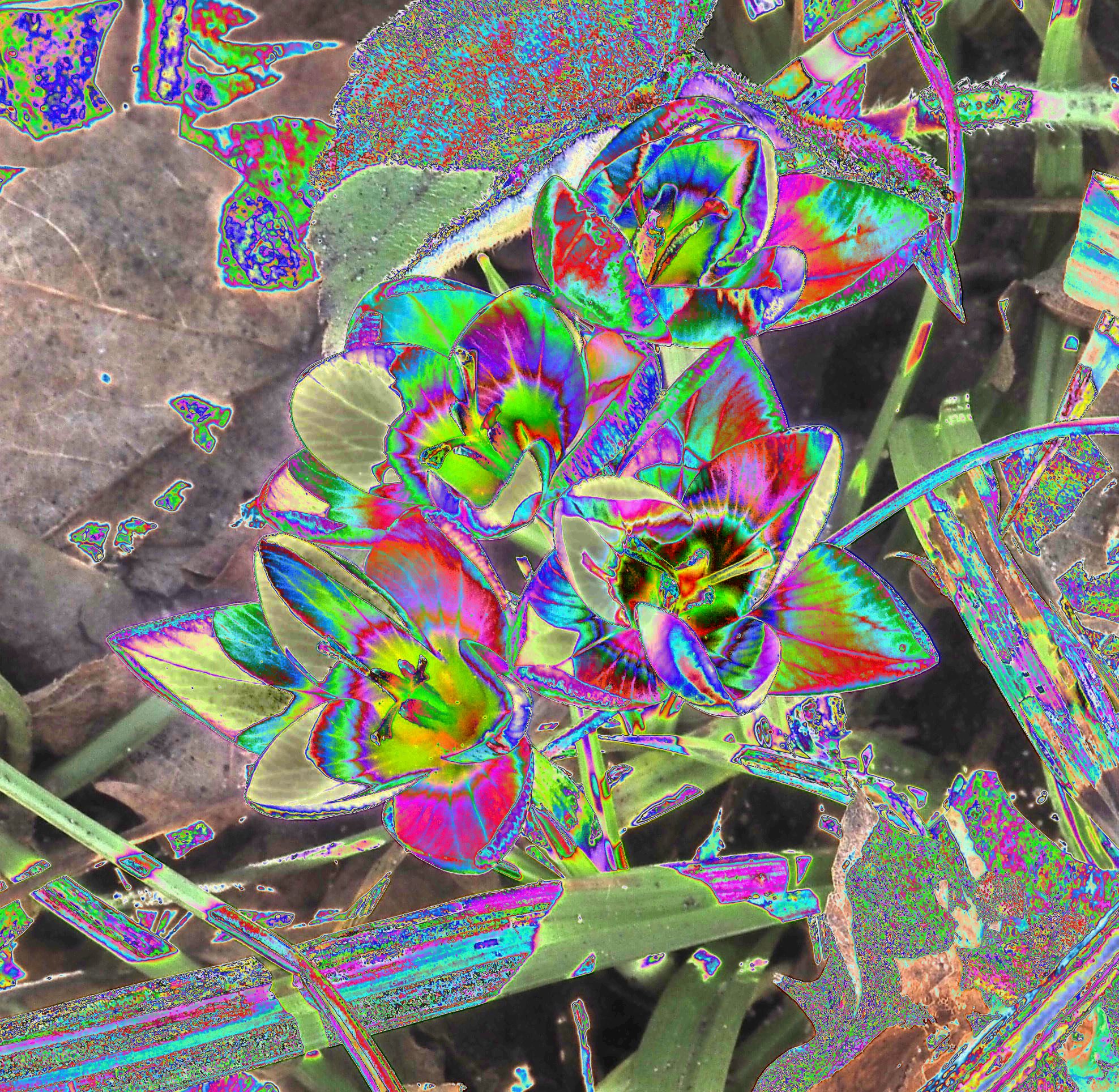
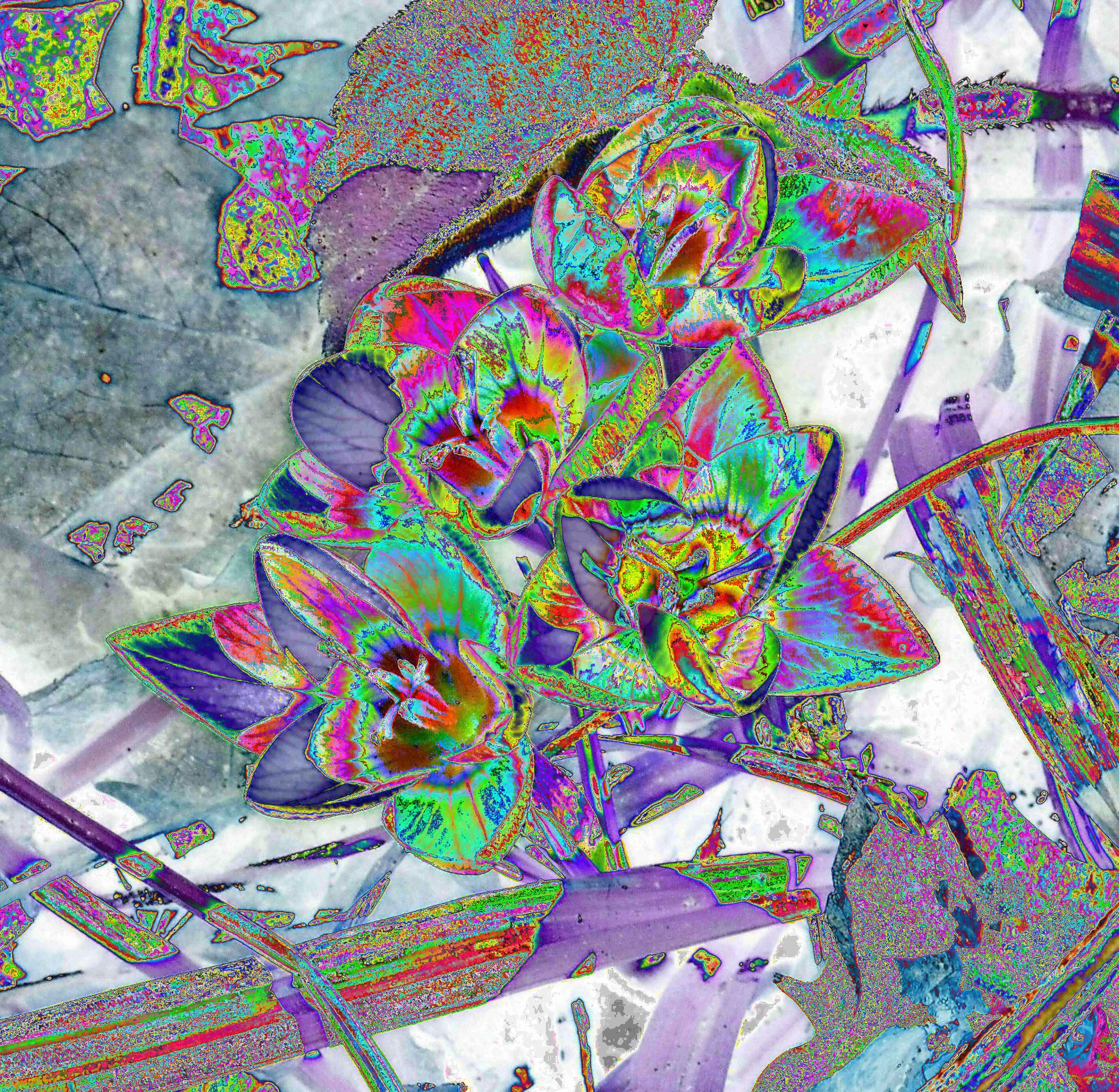
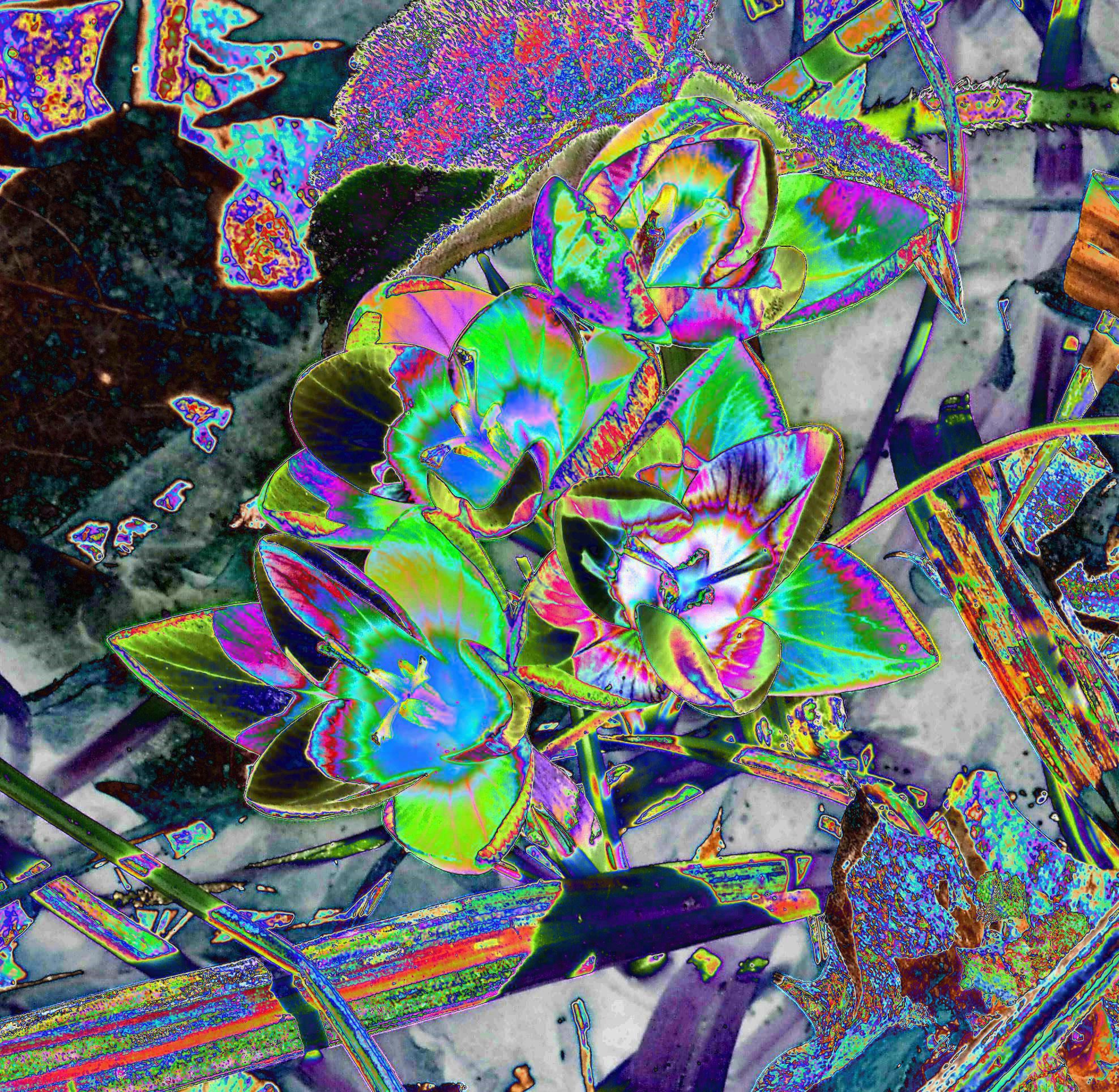
Folks, the "hunker down in place" rule seems to be having some effect in slowing down the tiniest bit the terrible virus that is threatening so much and changing our whole world. Let's hope that our persistence will have even more effect as time goes on. Again, remember that we really are all in this together. I feel that more and more our friendships will have to tide us through. I've been looking for books to read about the plague or written during the plague. I ordered Boccaccio's Decameron, stories (many delightfully racy) written by 10 people, 10 stories each. And a book that slipped by me written by Geraldine Brooks in 2002 about living through the plague, called Year of Wonders: A Novel of the Plague. I hope it's as good as People of the Book.
Love, Martha
Back to March 15, 2020
Forward to April 5, 2020
Back to main menu
copyright Martha O'Kennon 2020





















































































